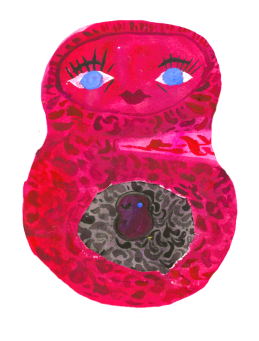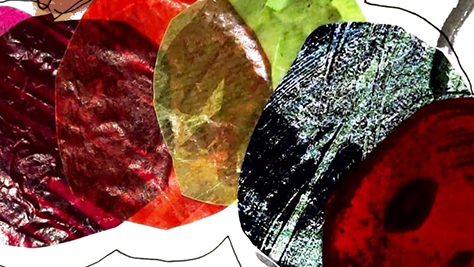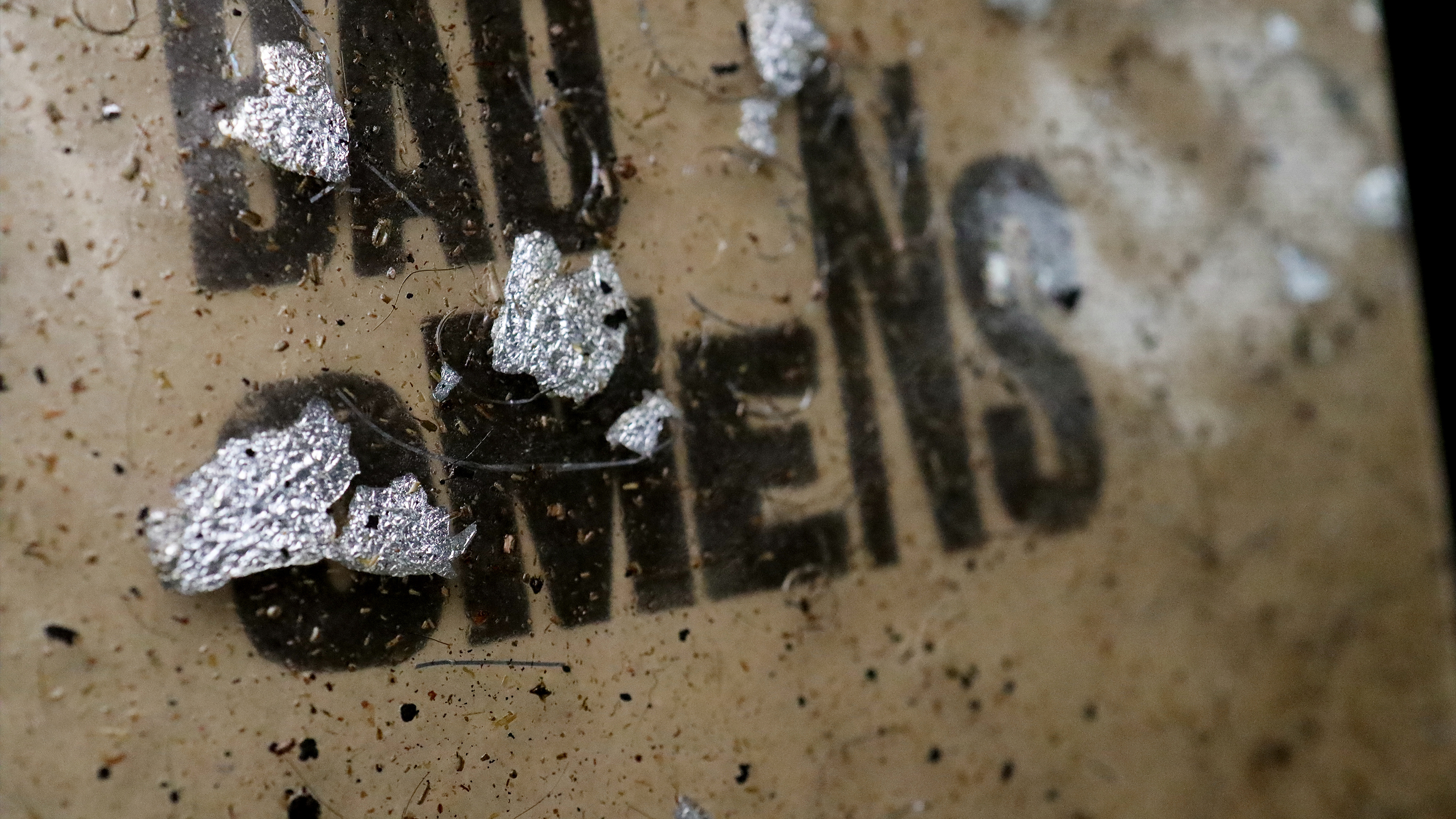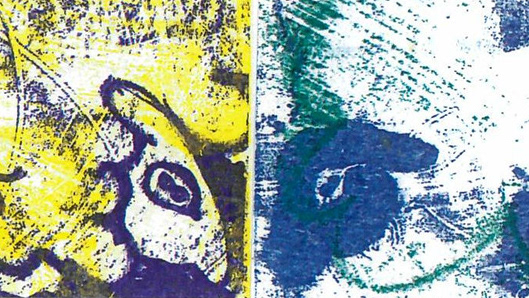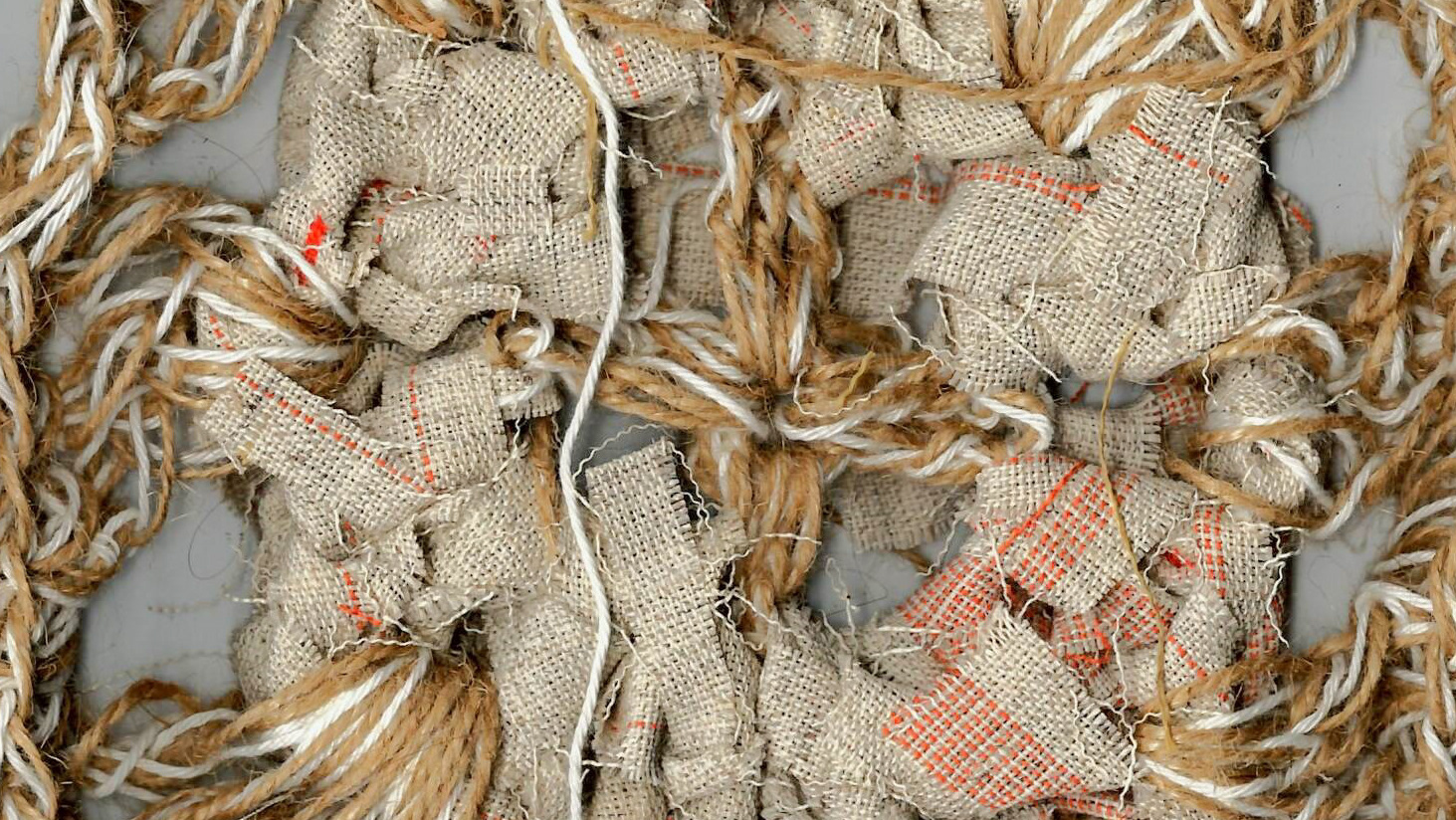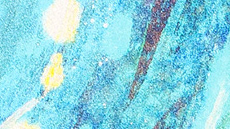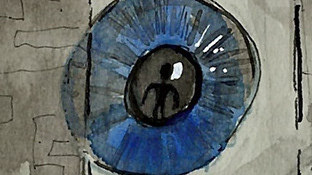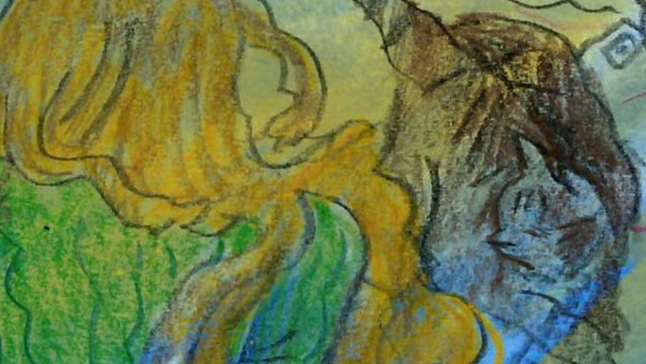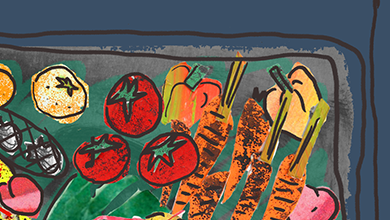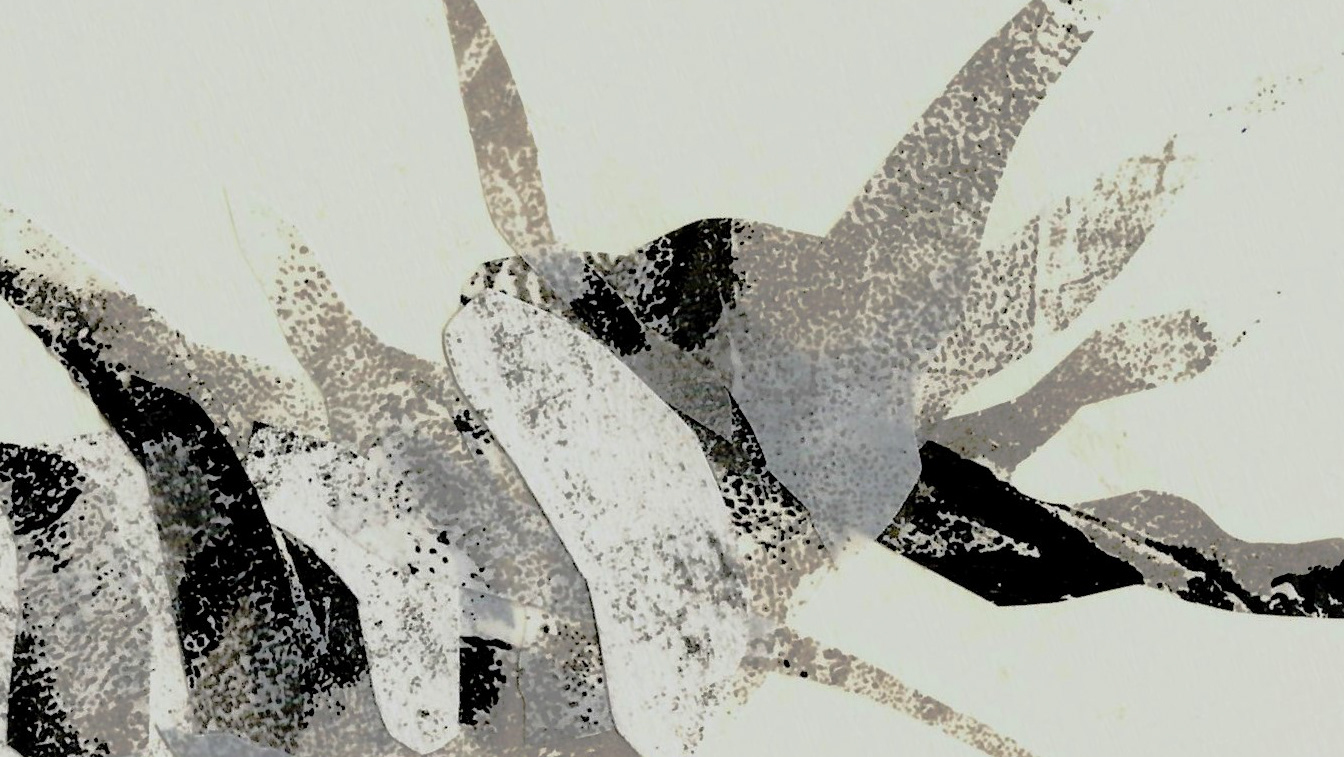

During this brief, I aim to get better at communicating meaningful ideas, as well as coming up with interesting concepts through extensive research.
Since this brief is connected to the 'Contemporary issues in illustration' presentation, at the beginning of the brief I struggled to pick a topic, as I felt that what I would like to represent visually didn't necessarily overlap with the topics that I would like and feel confident to talk about in a written presentation.
In the end, I decided to lean more into the 'your voice' aspect of this brief and to go with a topic that can apply to my life. I'm not used to working on projects that are quite personal so I wanted to try this out.
At this point, I'm thinking of making something relating to cultural separation, specifically losing touch with your cultural identity when being faced with another culture that is predominant and its influence, and trying to find a connection between 2 identities, as well as relating to the physical separation of it.
I also want to talk about cultural hybridity. In a modern world, hybridity is defined by the combination of an immigrants’ culture reworked by aspects of the host culture. Therefore, the identity of immigrants cannot be detached from cultural hybridity, as this experience confers a sense of self-identity that is altered by a new environment. As stated in studies about immigrant identity (Nyongesa, 2018), hybridity plays an important role in the construction of migrant identity.
As a motif, I found that matryoshka dolls work really well as you can physically separate them from each other and take one out. Also, the patterns on them are very important as they give away what theme they are following, and sometimes where they were made at; telling a story through patterns being something I'm interested in exploring at the moment.
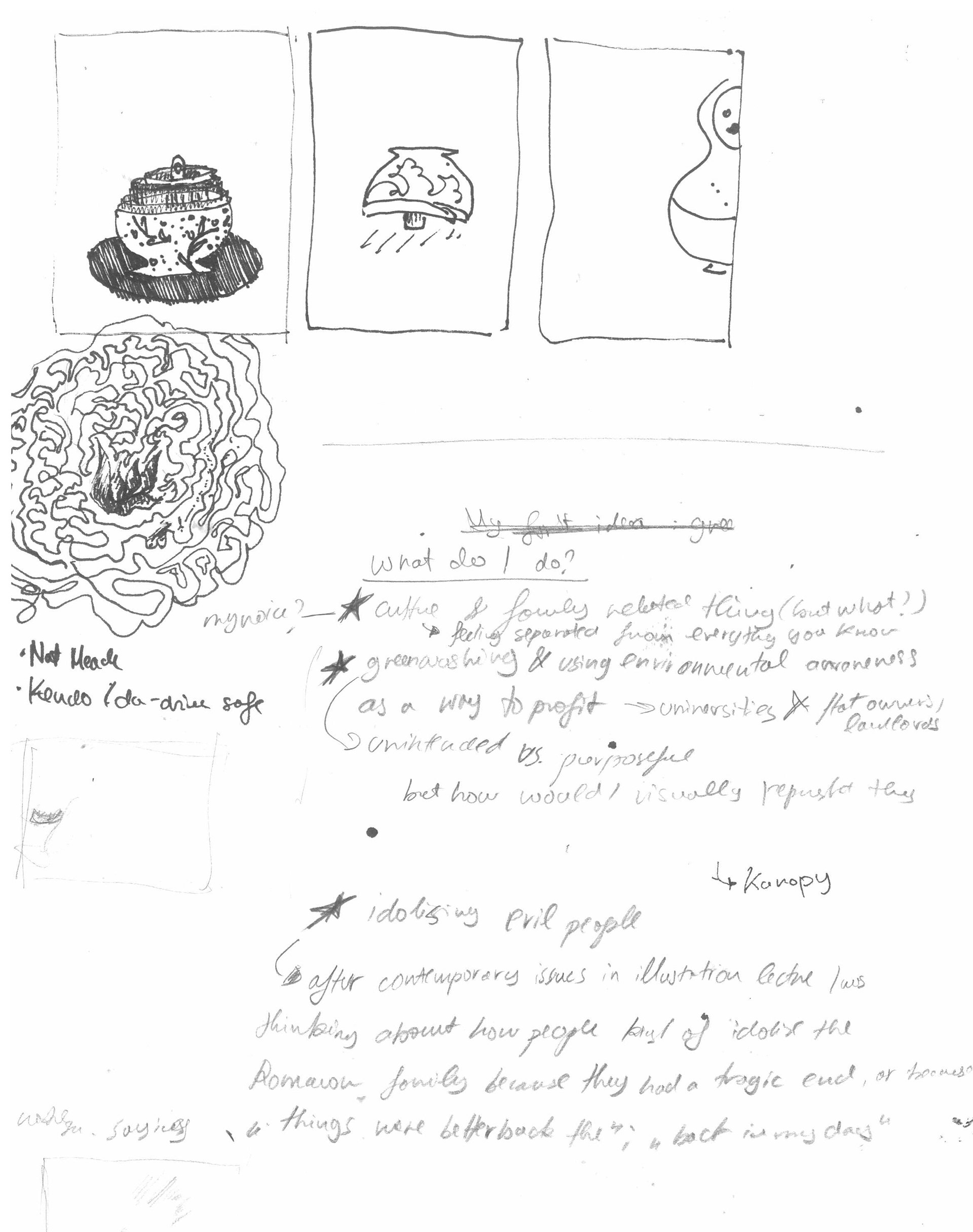
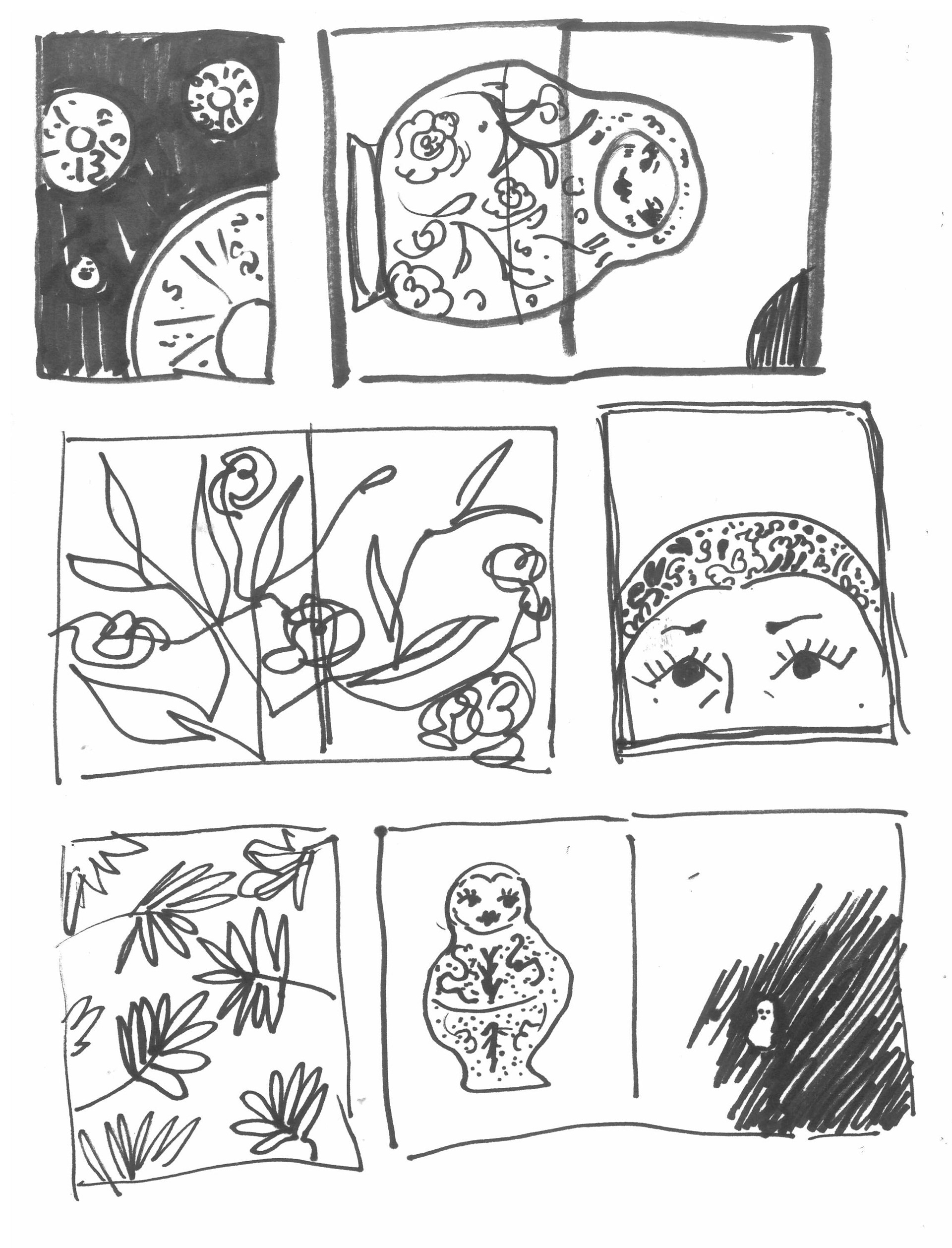
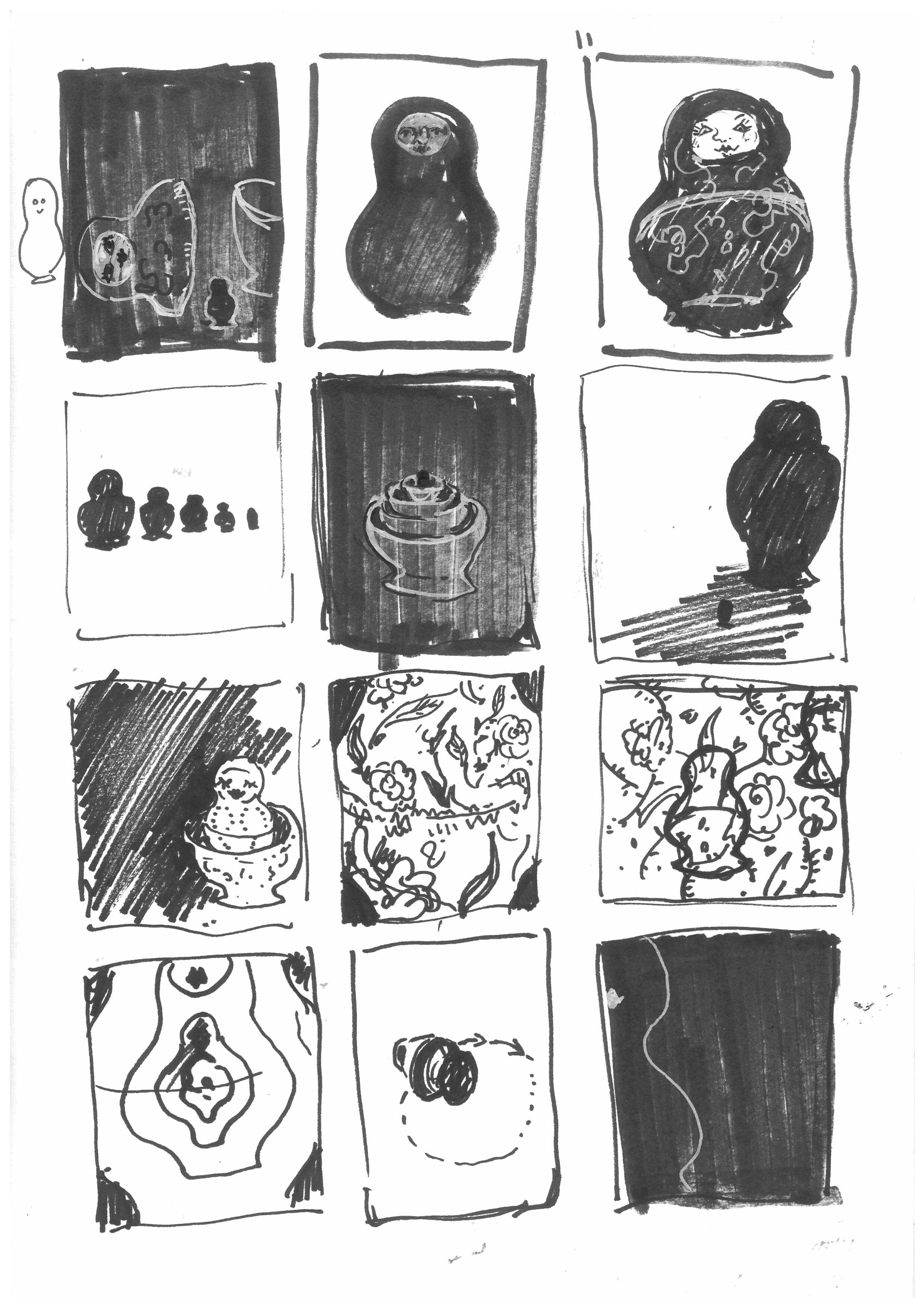
INITIAL RESEARCH
Since I've been struggling with finding research sources for this project, as the topic I chose is a bit vague and hard to put into words, I decided to look at how other people have interpreted the concept of cultural hybridity and separation.
'Here, the artist is exploring the concept of westernisation and cultural hybridisation. The former is the adoption of western culture in society, and the latter a process by which cultural elements blend into another culture. In the series as a whole, Johnson is “highlighting young and vibrant individuals” from his life, namely his friends and family. “It’s a body of work which expresses the consequential effect of the inter-diffusion of cultures across separate spaces and regions; on the embodiment of the contemporary African being; and making portraiture to do so.” '
'Visually, within this piece, the subject is a “young contemporary of an apparent African origin”, wearing westernised fashion and cradling a Maltipoo puppy, a cross-bread of Maltese and Toy-poodle which was first bred in America during the 90s. It’s a powerful piece that both juxtaposes and merges different cultures, showing how the individual has the means to choose, mesh and adopt different elements from such. “This piece, just like others from this particular body of work, was created with the intent to stir up the consciousness of the viewer, to the interrelationships between the elements portrayed in the image, hence stretching back to the realisation of cultural hybridity as a phenomenon in this present day. Culture is a social behaviour as well as lifestyle; particularly in contemporary fashion.”'
( https://psyche.co/guides/how-to-cope-with-experiencing-feelings-of-unreality )
A possible theme to explore in this brief would be the depersonalization that can affect immigrants when moving to a new country.
'Most people, most of the time, navigate reality without giving it a second thought. We move through our lives with a sense of flow and integration. The big questions of philosophy and existentialism are usually left for introspective moments, away from the daily distractions of life.
But what if that were flipped on its head, and life was a constant feeling of disintegration, of being cut off from reality, of questioning your existence?' ( Shaun O Connor, 'How to cope when life seems unreal' )
Depersonalisation can be defined as a temporary sense of detachment from the self, a sense that the world isn't real, and feeling like you're in a dream, or not really there.
This can be a protection mechanism against psychological trauma, and can be brought upon by anxiety. Since moving abroad is a very stressful, anxiety inducing experience, feelings of unreality are a common occurrence while immigrating. This can amplify the feelings of separation from the new community, making it difficult to form new connections in a already unfamiliar place, while also triggering a lack of motivation to maintain old connections from the home country, which can get exhausting at times.
In Touch (2018)
Pawel Ziemilski
'The story of people from a little Polish village called Stare Juchy (in Polish: Old Blood). The village is located in Masuria, area often referred as ‘’The Land of Thousand Lakes’’. Around 400 people from this village have emigrated to Iceland since the 80’s and nobody has returned. Those who stayed behind - most of them from the older generation - are hoping for the reunion. But by now their children and grandchildren are settling into new lives on the other side of Europe. The distance separating them is great and the journey expensive, so they don’t get to hug each other very often. The best alternative is intensive contact by Skype.'
I find the overlapping of images really powerful, especially with how different the environments are (communist blocks vs the ocean landscape).
I think the images perfectly capture trying to maintain a connection from a long distance, but still feeling separated in spite of the efforts; there's a certain emptiness that comes with international calls, as it feels like you can see the slow and painful death of a once powerful connection. Also, I feel like the time zone difference really enhances the image by intensifying the contrast.


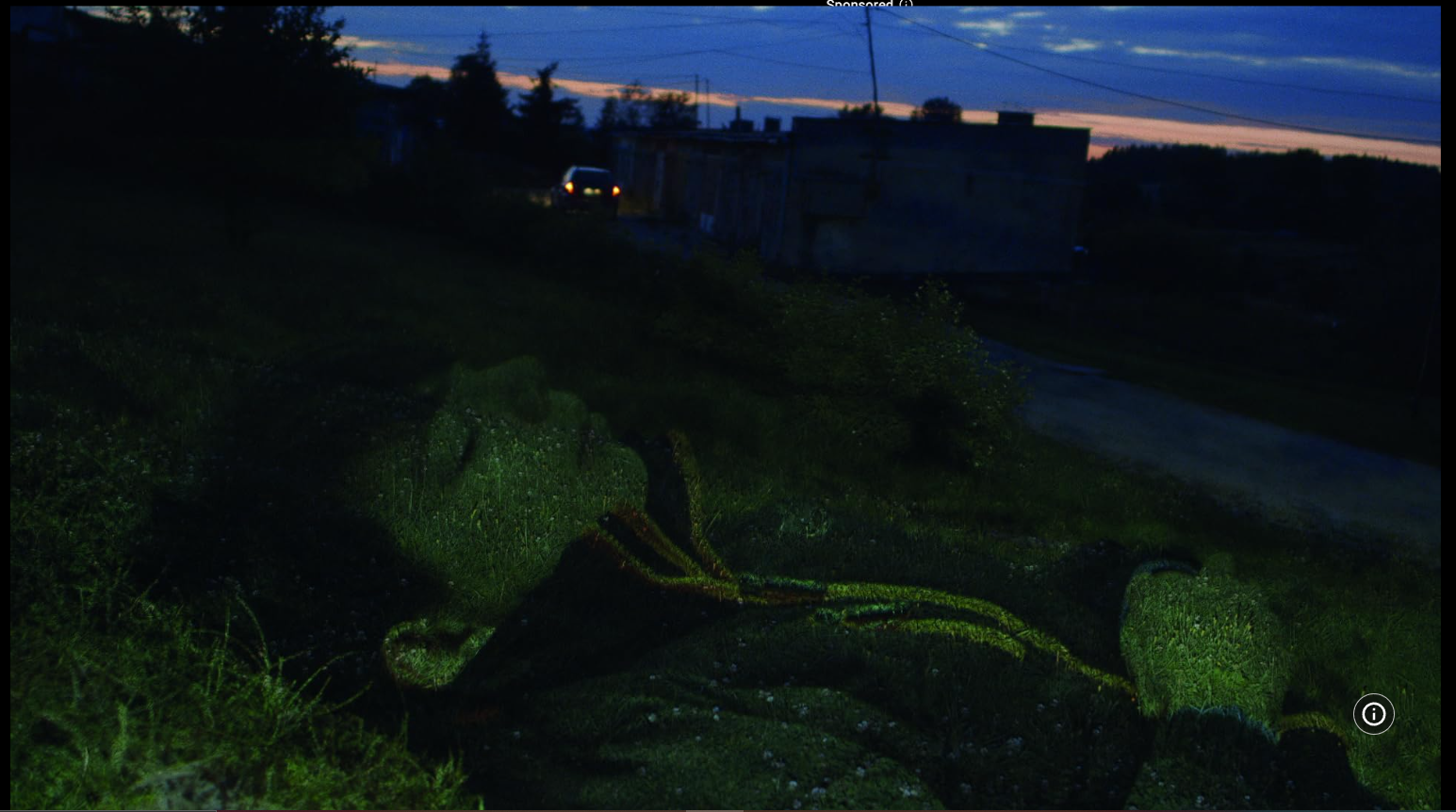
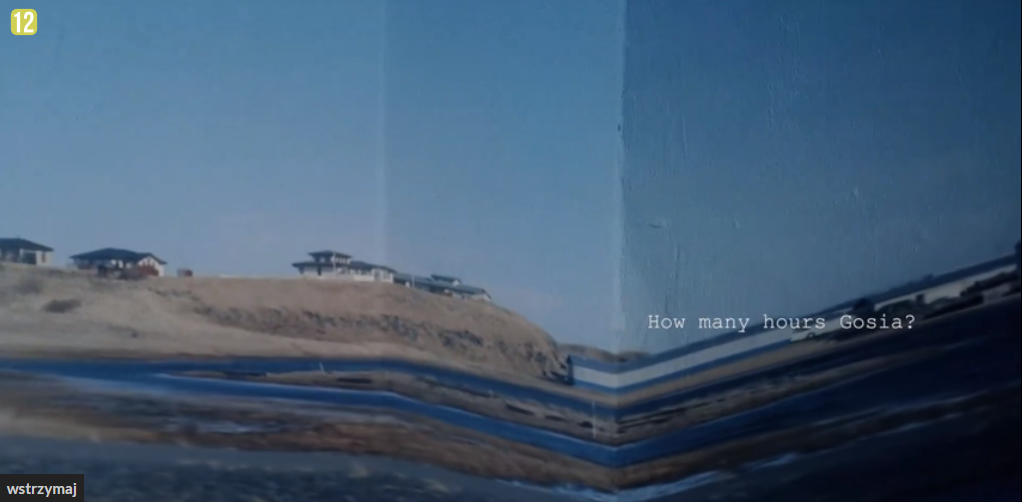

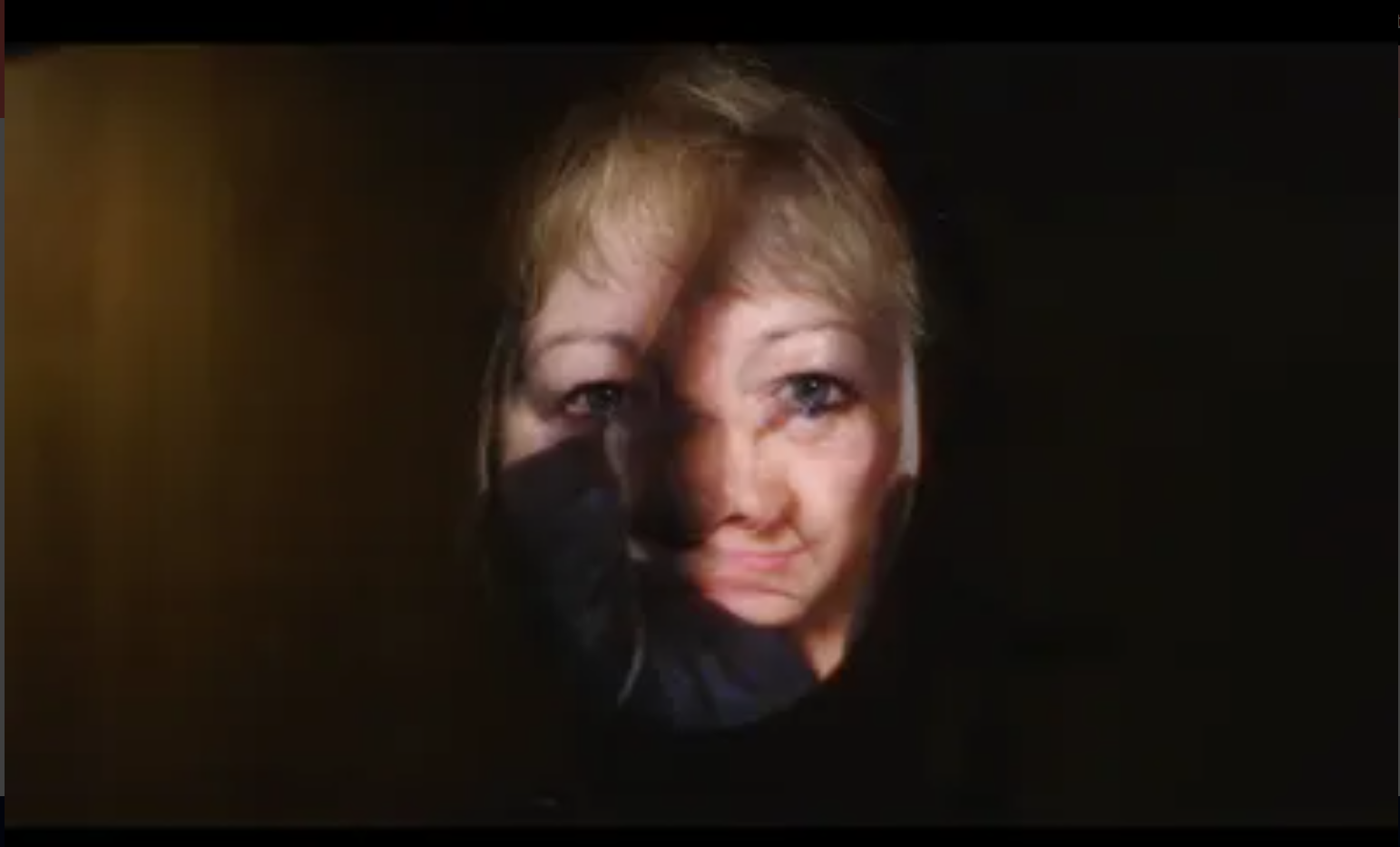


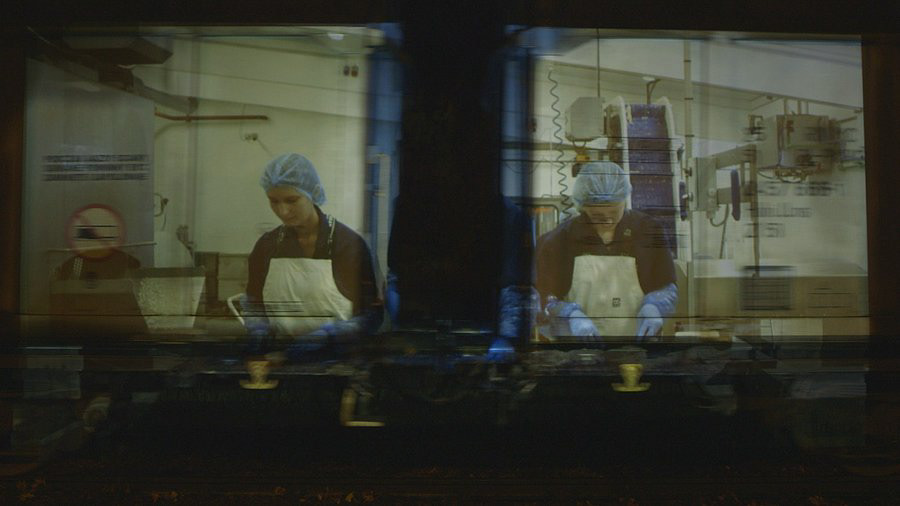
''Notwithstanding the evidence that digital media can enable self-expression and maintain existing social ties despite physical and geographical distance, there are concerns that digital media leads to the fragmentation of identity and the weakening of social ties. In her book, Life on Screen, examining identities in the digital age, Sherry Turkle (1995) argued that identities had become incomplete, ever-changing and fragmented. In contrast, in their discussion of youth digital media practices and identity, and Weber and Mitchell (2008) have argued that the fluid, fragmented nature of identity in the context of digital media can still be understood as forming part of a single ‘work in progress’ – a unified, if not always coherent, whole. Creative production required in digital media practices highlights the ways in which identities are ‘assembled’. Weber and Mitchell argue that youth digital media practices demonstrate the ways in which digital production entails individual and collective negotiation, subversion and adaptation of the technology, the setting and the relationships at play (Weber and Mitchell, 2008, p. 39). They argue the ‘constructedness’ that characterises identity processes in digital media highlights the contingent and changing nature of identity as ‘work-inprogress’. They argue for the notion of ‘Identities-in-Action’ to highlight the ways in which digital media is part of the social and cultural material drawn upon as people and communities construct identity through action, in a form of ‘personal and social bricolage’ (Weber and Mitchell, 2008, p. 43). The ‘components’ of identity in a digital society can be augmented, renovated or discarded but will always retain some features – ‘shadows’ or ‘traces’ – of past assemblages. As such, ‘Identities-in-Action’ are inherently more public than ever before. The ways in which digital media practices are associated with a blurring of public and private have significant implications for identity and belonging.''
Huppatz, Kate, et al. Identity and Belonging, Bloomsbury Publishing Plc, 2015. ProQuest Ebook Central, http://ebookcentral.proquest.com/lib/ntuuk/detail.action?docID=4763814.
Created from ntuuk on 2023-11-06 15:14:11.
Huppatz, Kate, et al. Identity and Belonging, Bloomsbury Publishing Plc, 2015. ProQuest Ebook Central, http://ebookcentral.proquest.com/lib/ntuuk/detail.action?docID=4763814.
Created from ntuuk on 2023-11-06 15:14:11.
When constructing a transnational identity, migrants tend to embed themselves in multiple places through cultural practices and behaviors specific to both their home and host country. Therefore, even though it may seem that way, migrating doesn’t have purely personal consequences, as it may also change some aspects of the cultures of the people/countries/towns they are part of.
A piece of media that tackles this is ‘In Touch’ (2018). I feel like the juxtaposition of the foreign environment projected over the hometown perfectly captures the state of cultural separation. In this documentary, the focus is on the people of the home country, influenced by the younger people’s mass migration to Iceland.
The people have adjusted their traditions to be able to at least partially include those who are abroad. The images are enveloped in nostalgia, giving us a sense that ‘something’ is missing, and the identities of the people feel fragmented, pulled in 2 different directions.
In Touch also explores the sense of depersonalisation that can affect immigrants.
Depersonalisation refers to a temporary detachment from the self, a sense that the world isn’t real, and feeling like you’re in a dream.
Since moving abroad is a big change, unreality can happen as existing in a new space can bring about feelings of being cut off from reality and questioning your own existence.
This can amplify the feelings of separation from the new community, making it difficult to form new connections in an already unfamiliar place, while also triggering a lack of motivation to maintain old connections from the home country, which can get exhausting at times. The aforementioned documentary makes an effort to include their relatives in their new life but they are exhausted by it.
Chicano culture
Mexican-Americans trying to find a connection between their American and Mexican culture identity.
'...lowriders—the term refers to both the cars and their owners—have used customization as a means of resisting a homogenizing American society that too often suppresses the creativity and pride of its minorities.' (Nili Blanck, Smithsonian Magazine)
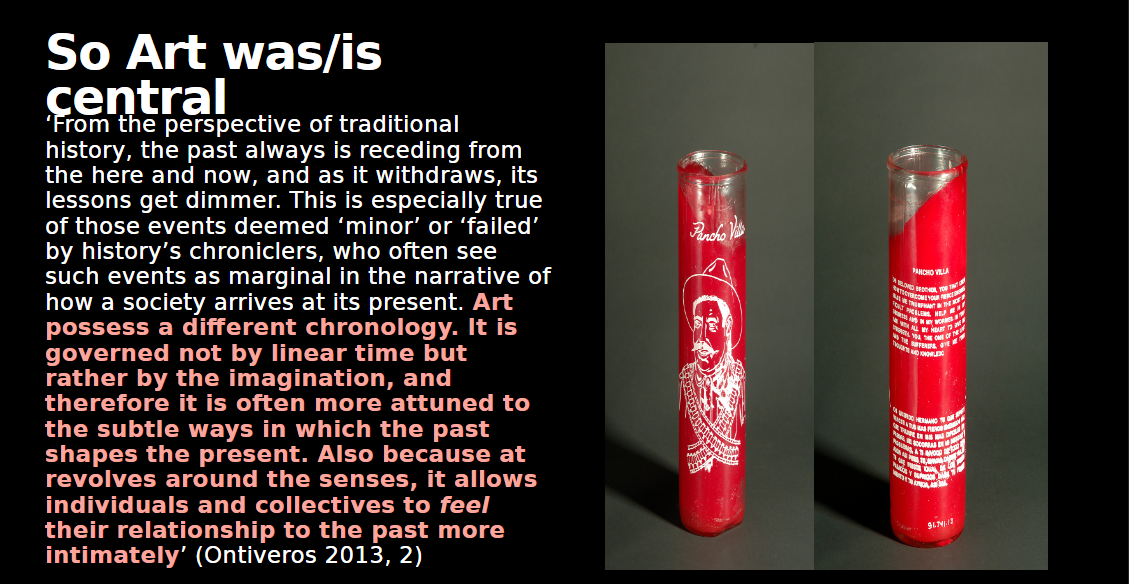
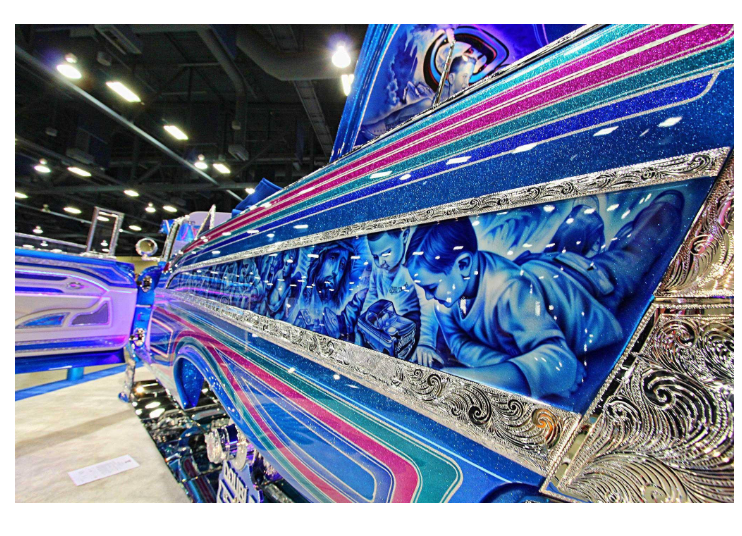


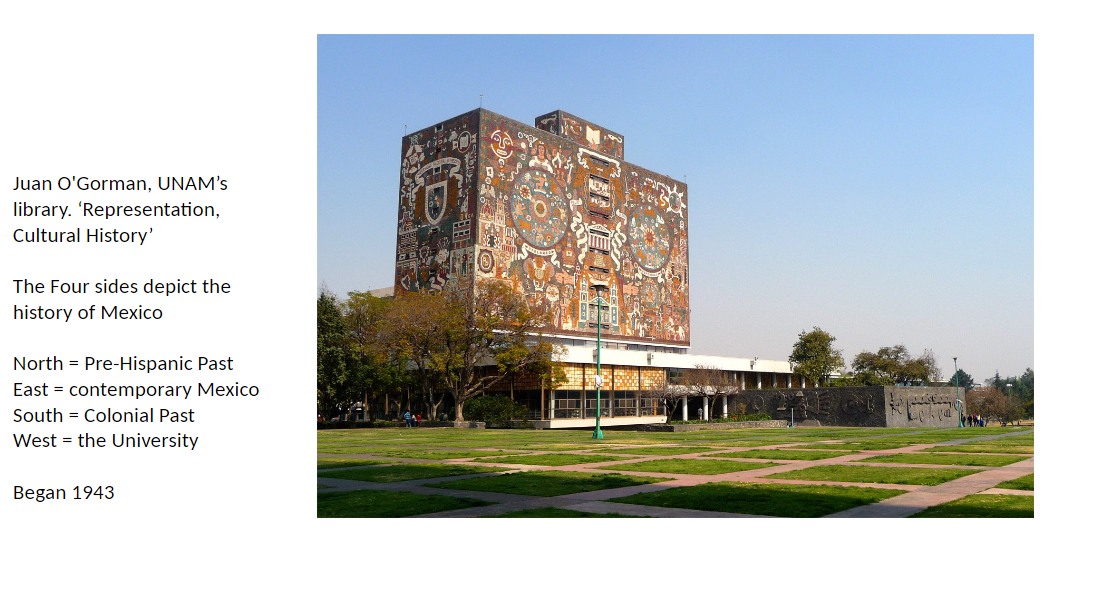
As we’ve discussed in a previous contemporary issues in illustration lecture, the Chicano movement was the first attempt to shape politics of unification in the interest of Mexican American working class.
The idea of mestizaje- cultural/racial mixing; positive unity, they don’t have to choose between one and the other.
‘ a visual story of how lowriders—the term refers to both the cars and their owners—have used customization as a means of resisting a homogenizing American society that too often suppresses the creativity and pride of its minorities.’ (Blanck, 2021)
The cars become a physical embodiment of the riders’ identity, and they represent a way to have a voice, which is emphasized by ‘cruising’, bringing attention to themselves.
Lowriding is an ‘activity that becomes an identity among youth’ (Holtz & Janicemarie, 1975)
Many exhibit Mexican cultural symbols, they are mobile canvases that serve to make a statement about the riders’ identity.
'Bound in eye-catching silver cloth, Displacement is a superbly designed artist's book recording Weiner's 1992 show at the Dia Center for the Arts in New York--one of his greatest exhibitions, remembered fondly to this day. It is constituted primarily of Weiner's classic typographic settings, carefully composed for the page, with a sequence of installation shots and a brief commentary on the book and exhibition by Gary Garrels. The interdependence between book and exhibition, which is a motif of Weiner's career, here finds concise expression in a volume that is a treat to move through.'
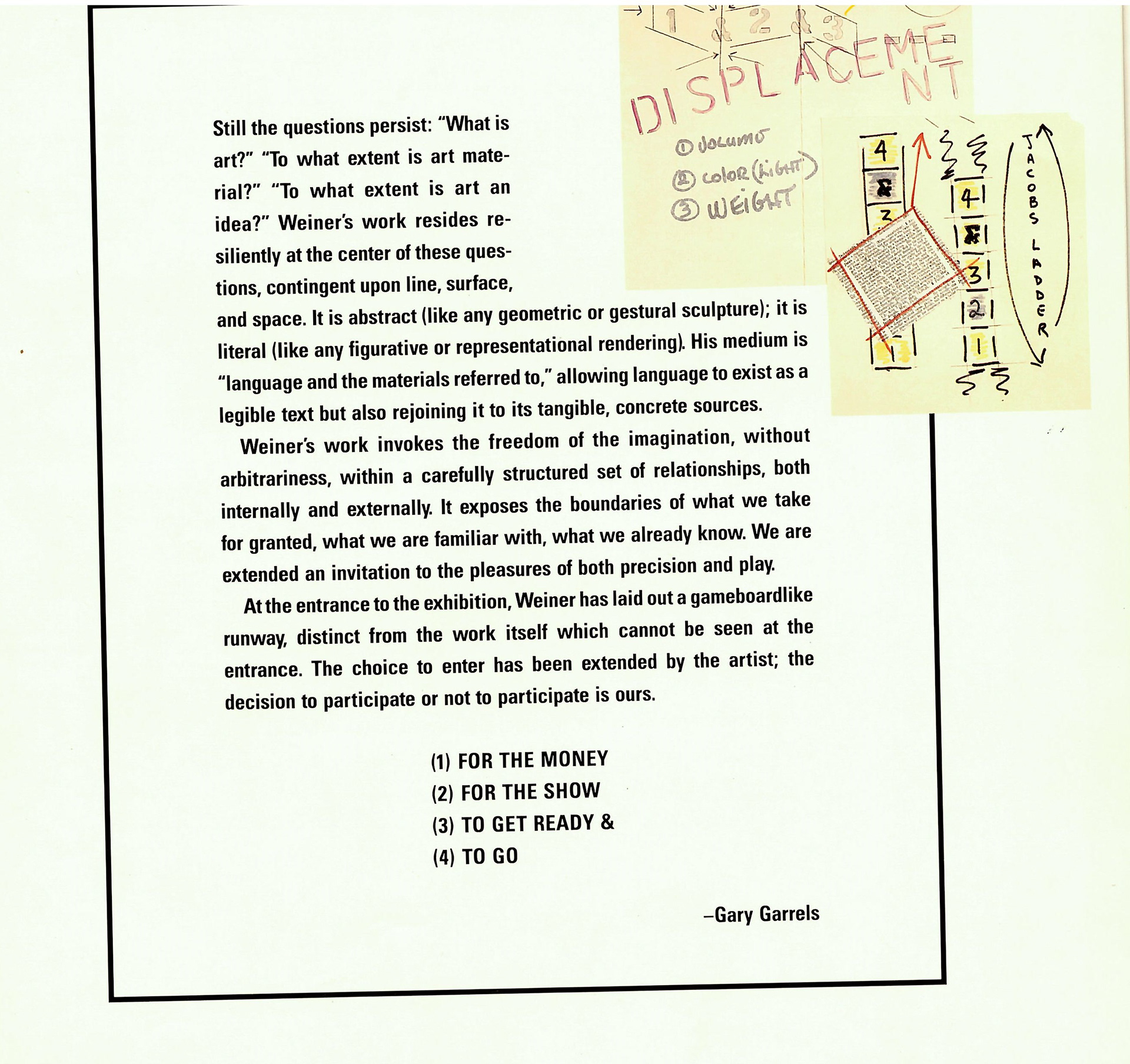
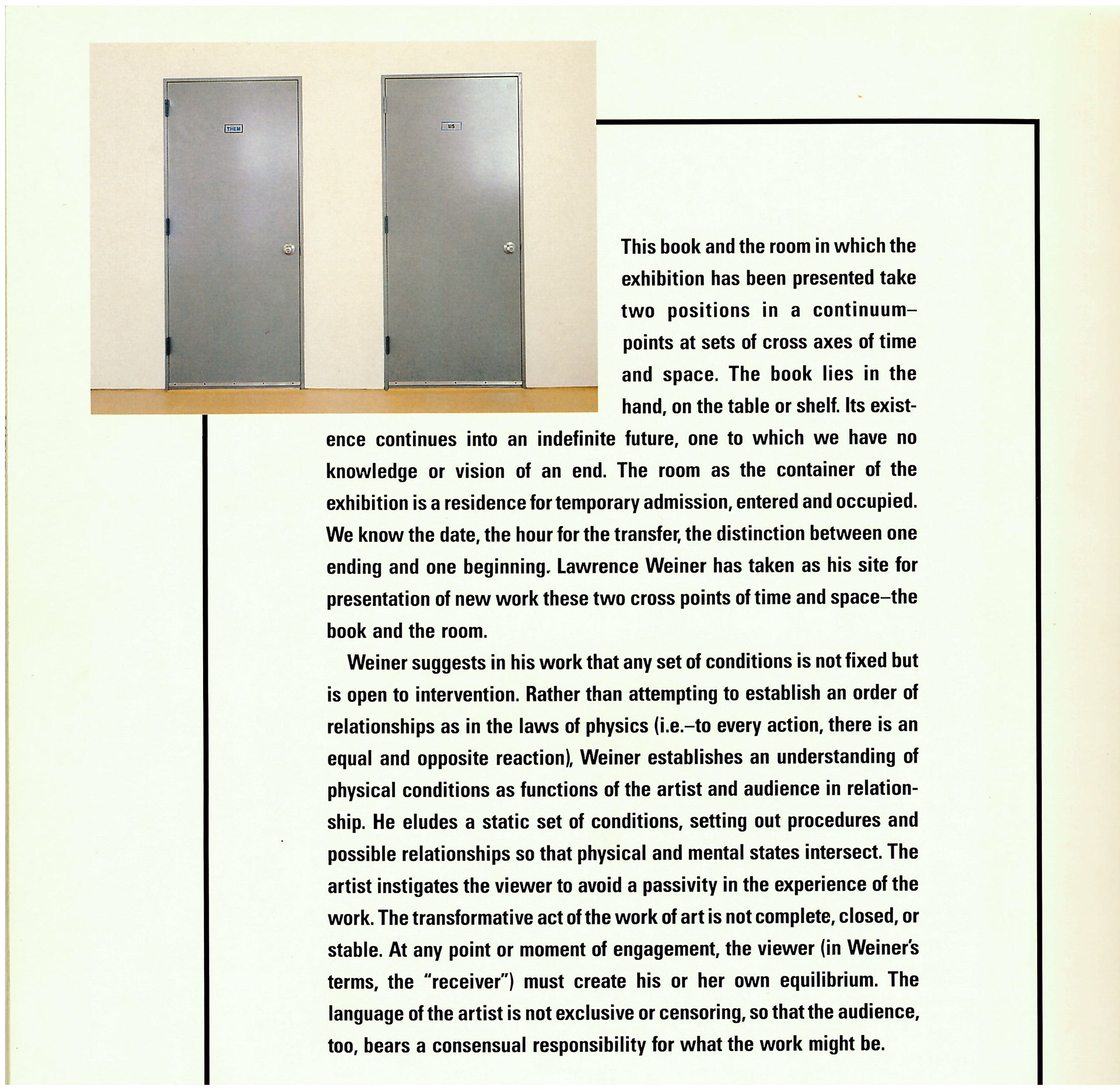
Although the theme of this book doesn't align with the cultural subject that I chose, I find that the images portraying separation can be relevant as a visual source. Here, the artist showcases his sketches of a gallery space seen from above, trying to find a way to adequately portray separation.
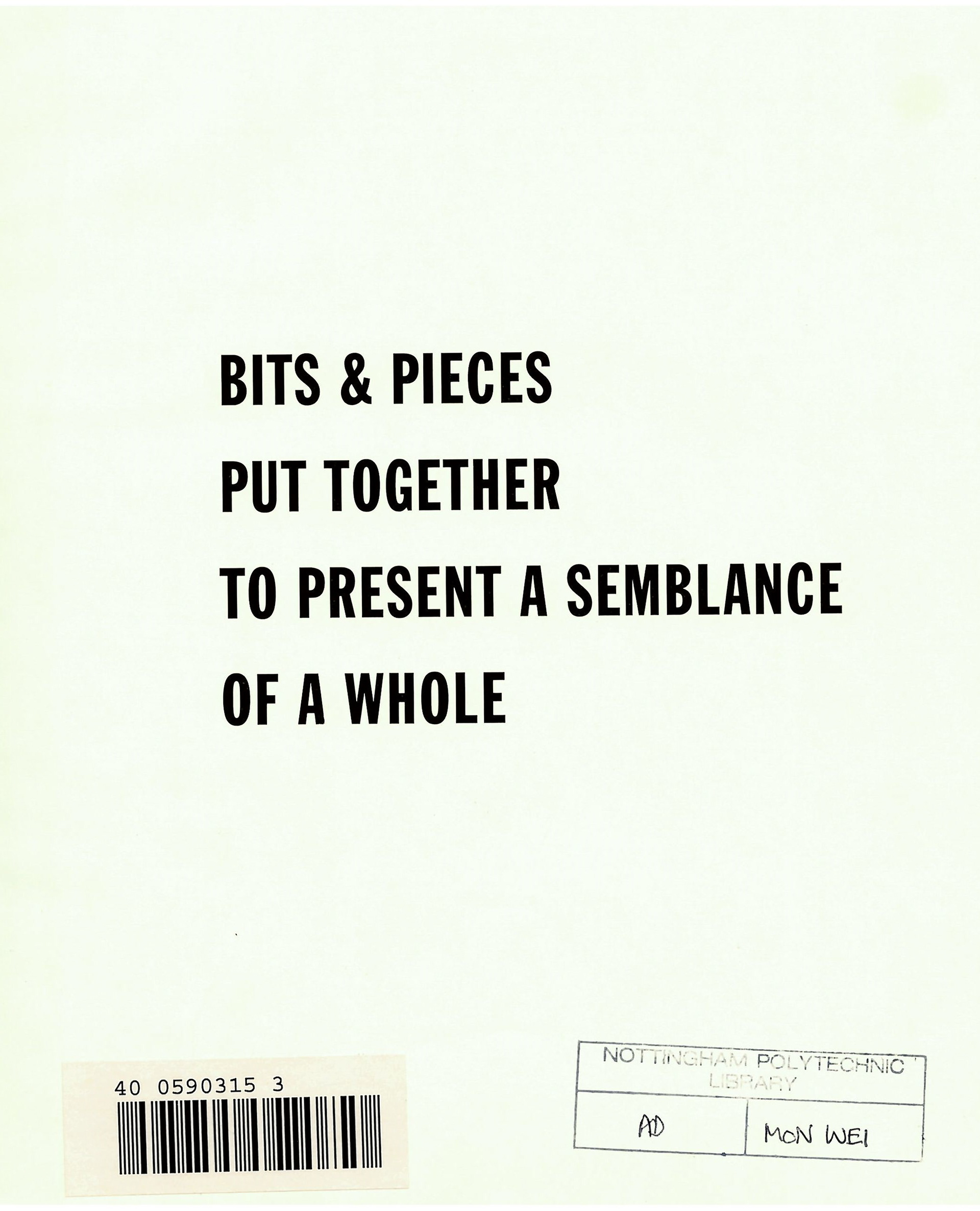
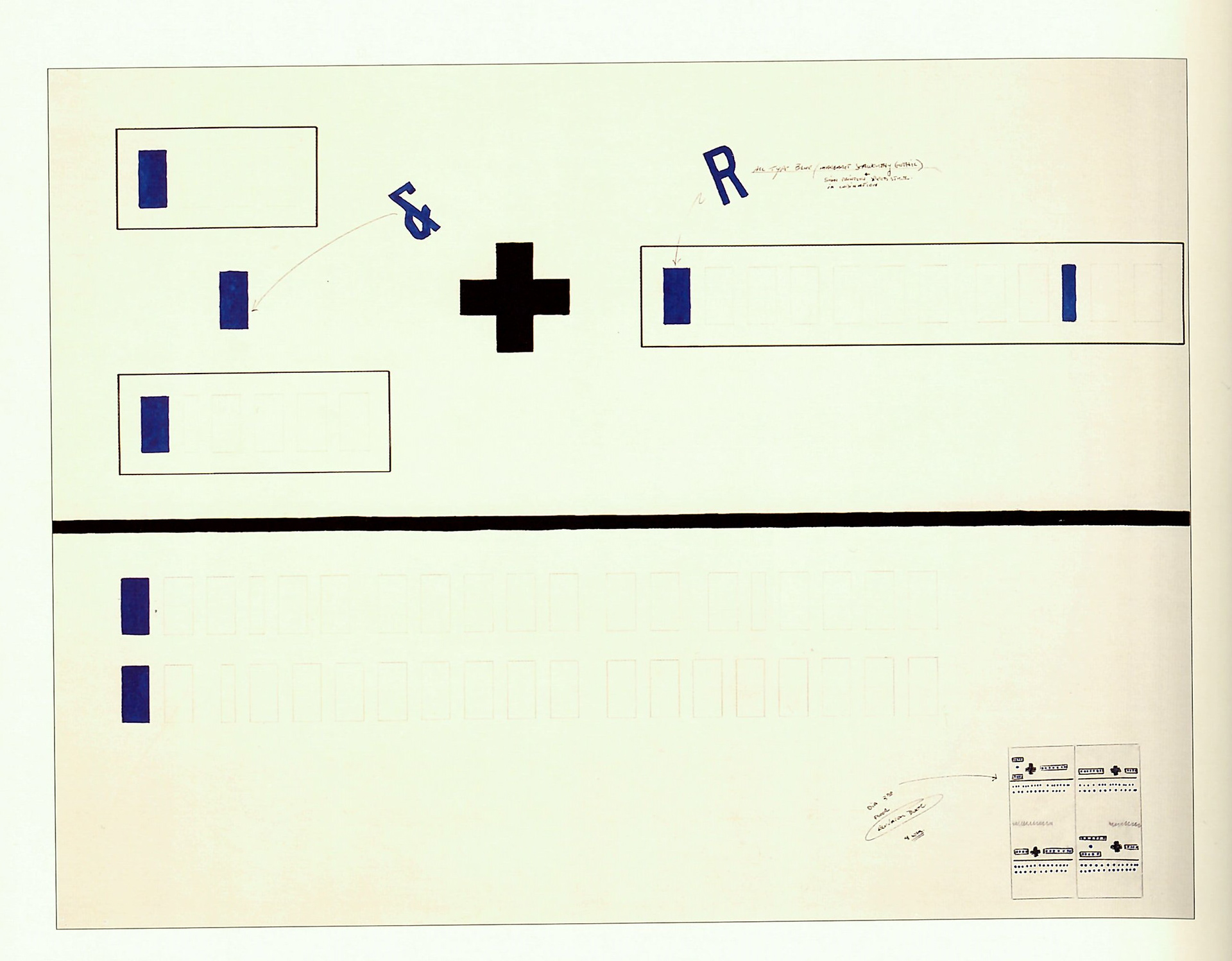


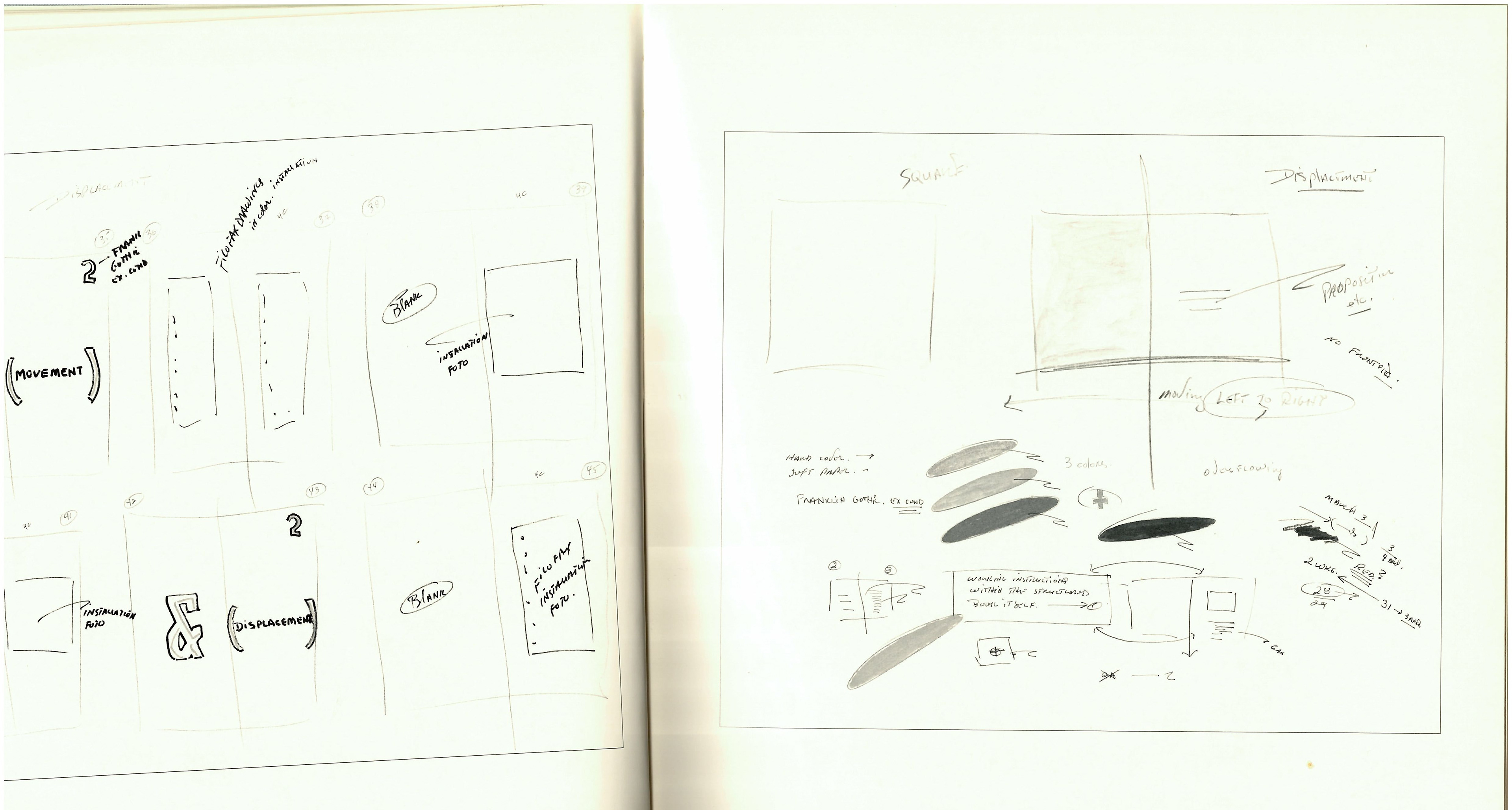



EMBRACING YOUR INNER CHILD
We began this workshop by writing down keywords related to our social issue. This is something I've been struggling with in my research since at this point the topic that I chose is still quite vague, so finding research sources has been quite difficult as I'm not able to perfectly put what I'm looking for into words.
One of my ideas for this book was to tell a story trough textiles/patterns, so here I started playing with patterns, making them more expressive and using different mediums and techniques to convey different moods, and really trying to think about what we can see inside patterns.
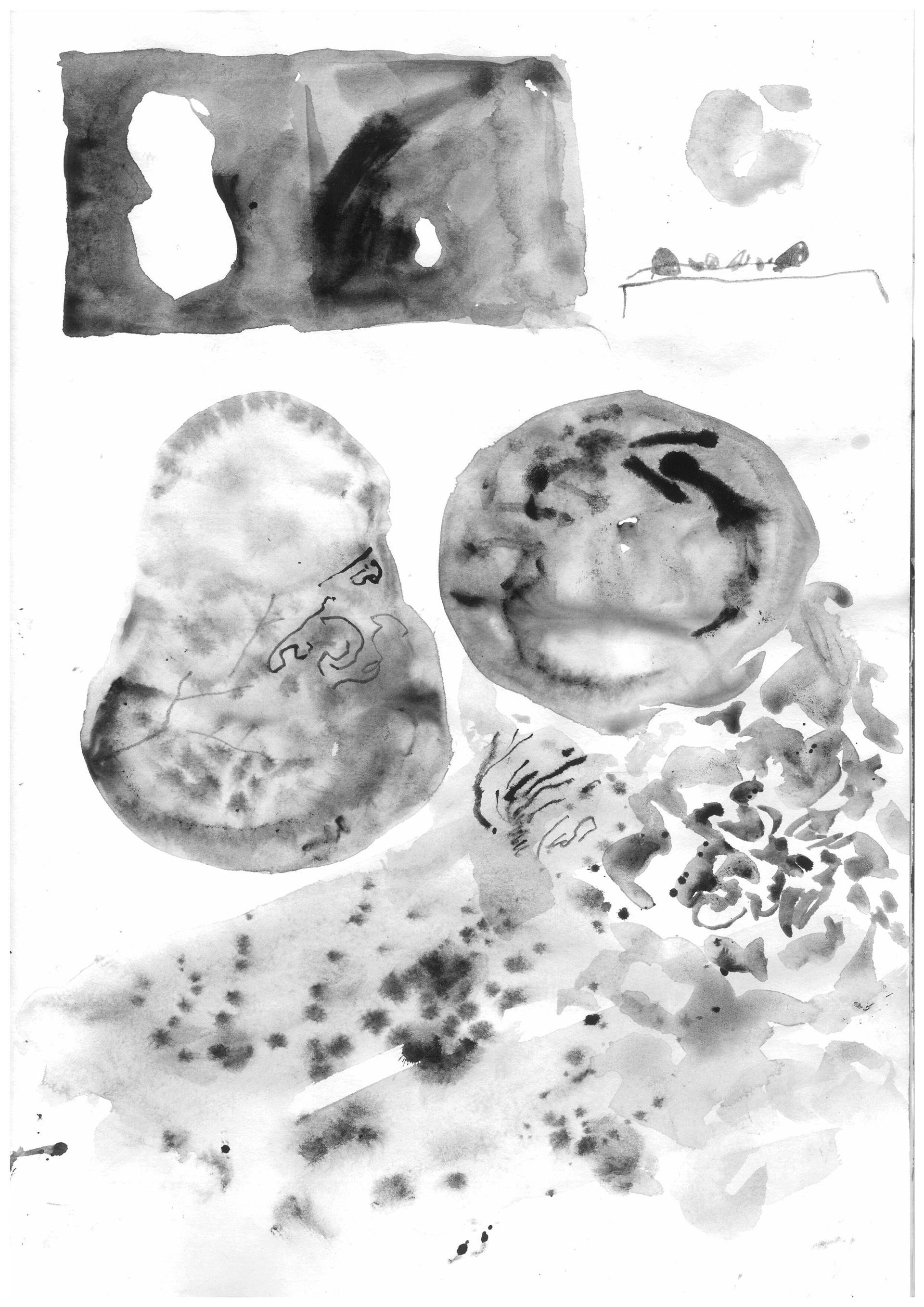

My first side of the paper was too wet so I redid it, meaning that at the end I had 3 A1 pages drawn out. I wanted to use the first side as well so I decided to cut it, but I accidentally cut it wrong meaning that I had different sizes of paper to stick together. In the end, I feel like this improved the book in some ways, adding another layer of contrast.
I think this was a really enjoyable workshop with some really interesting outcomes that I wouldn't have come up with on my own, with some of the compositions being surprisingly nice for something that was mostly unplanned.
If I were to do this again I would try to have different pattern densities across the page, as well as think more about what pages will be paired together in the final booklet.


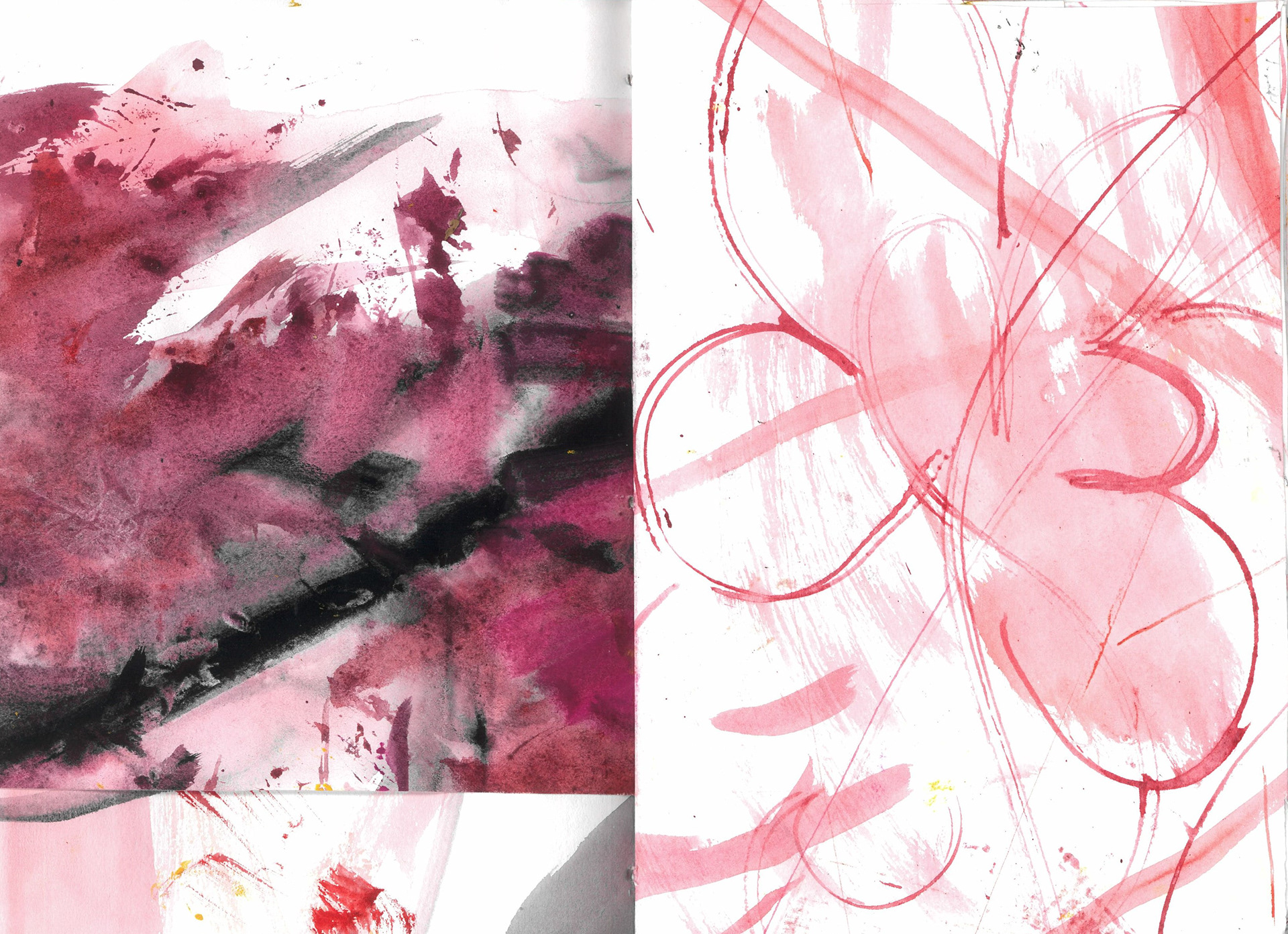


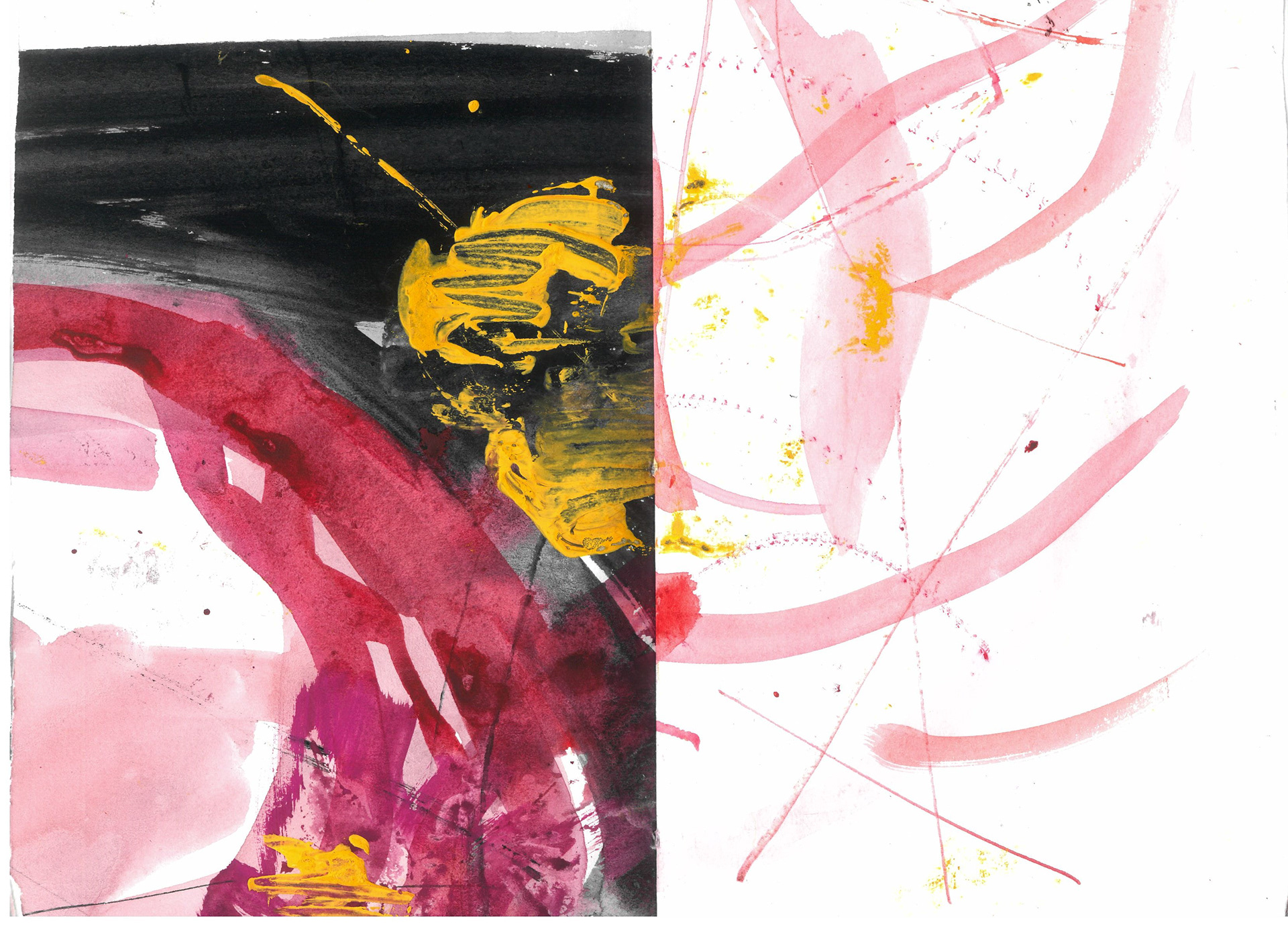



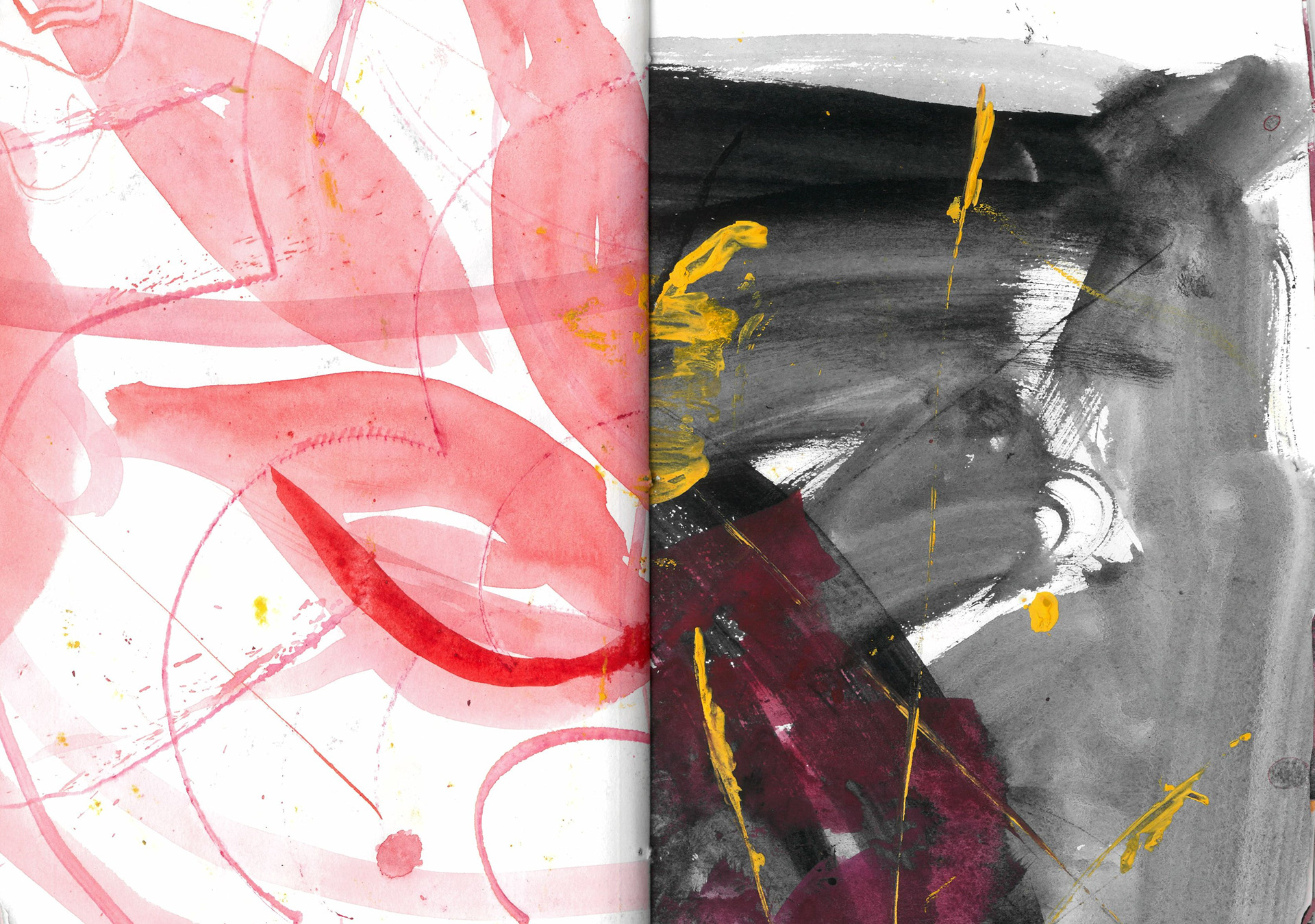

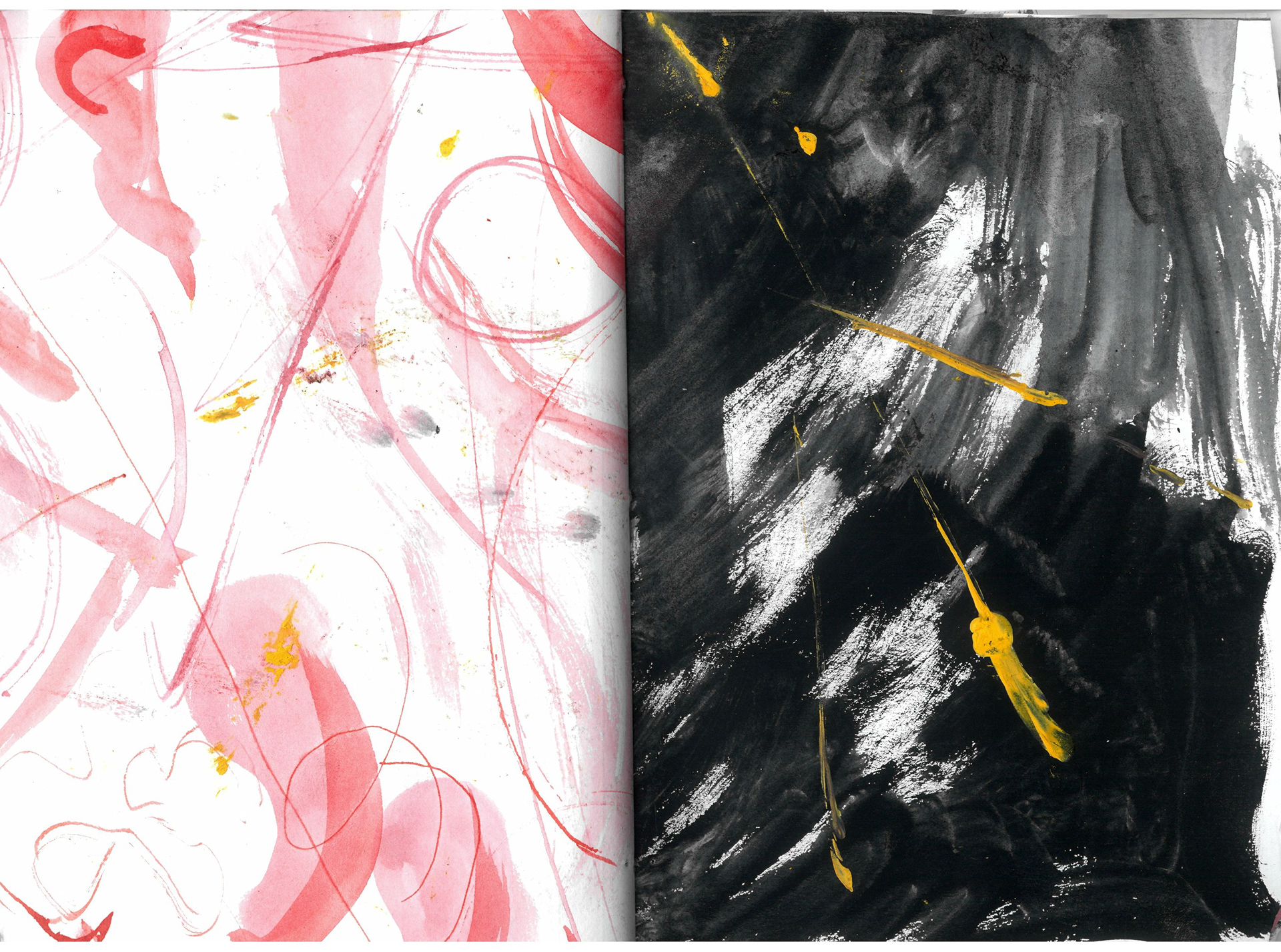
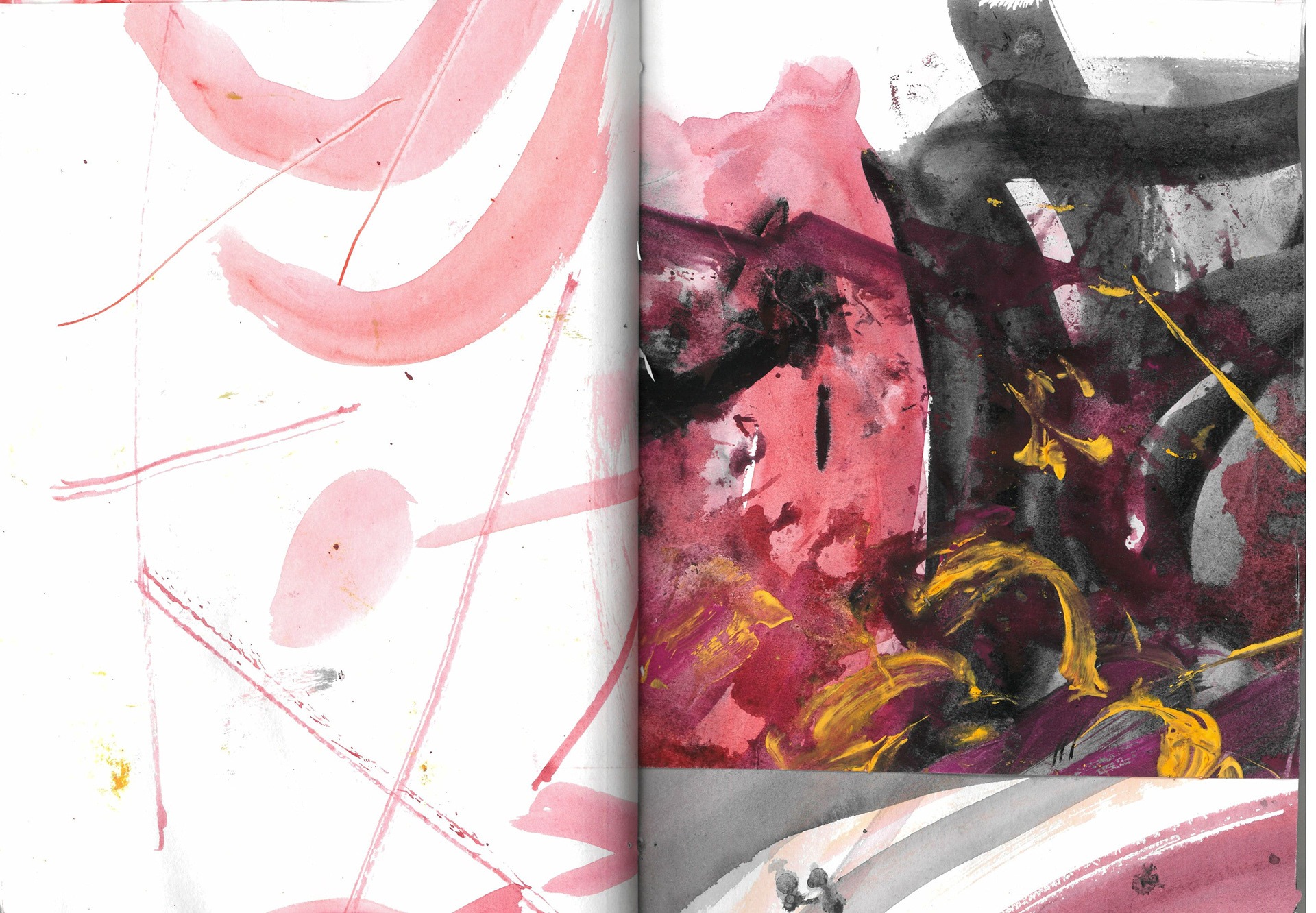
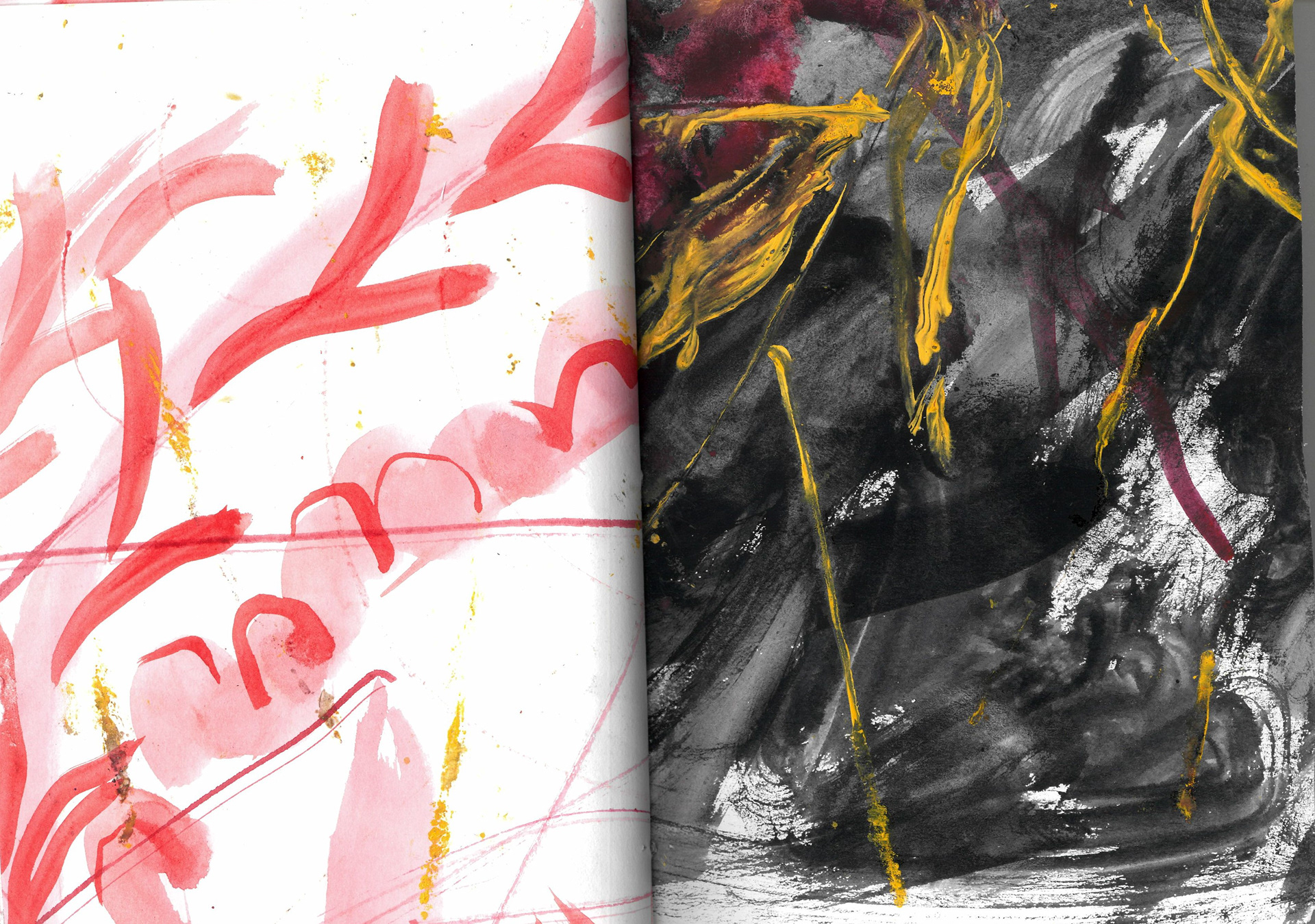



For the book, I was thinking of using some pop-up/interactive elements. Here I was experimenting with making the dolls appear behind each other when you turn the page.


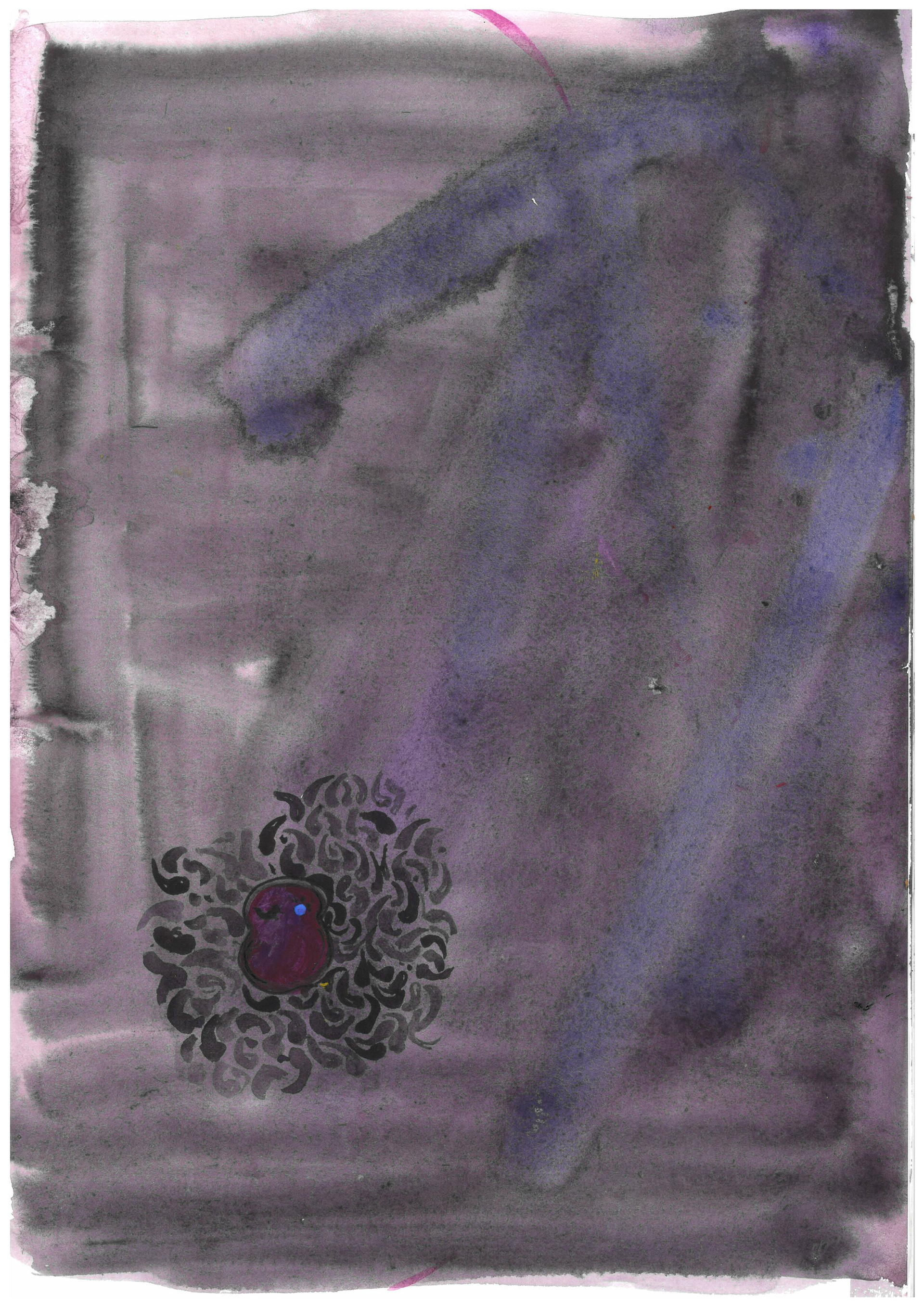

Since I wasn't exactly sure where to go with the book I decided to try creating images that could describe some sort of journey, hoping to come up with more ideas of what exactly I want to say trough the book.
Here, I started making a second mockup, I started drawing out the journey by making different colour backgrounds that will be the backbone of the story. I want to use the different shades to show some chromatic storytelling.


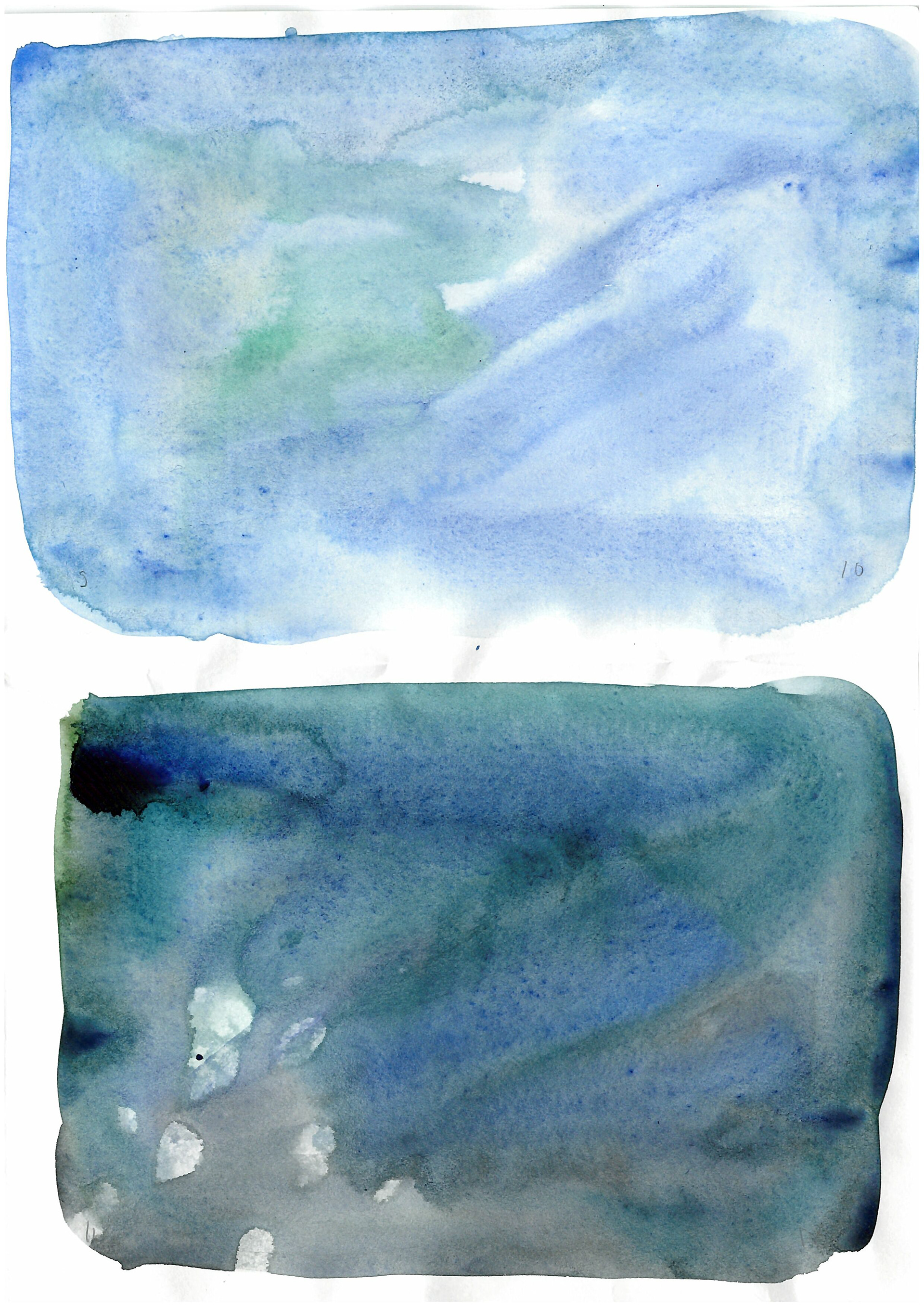

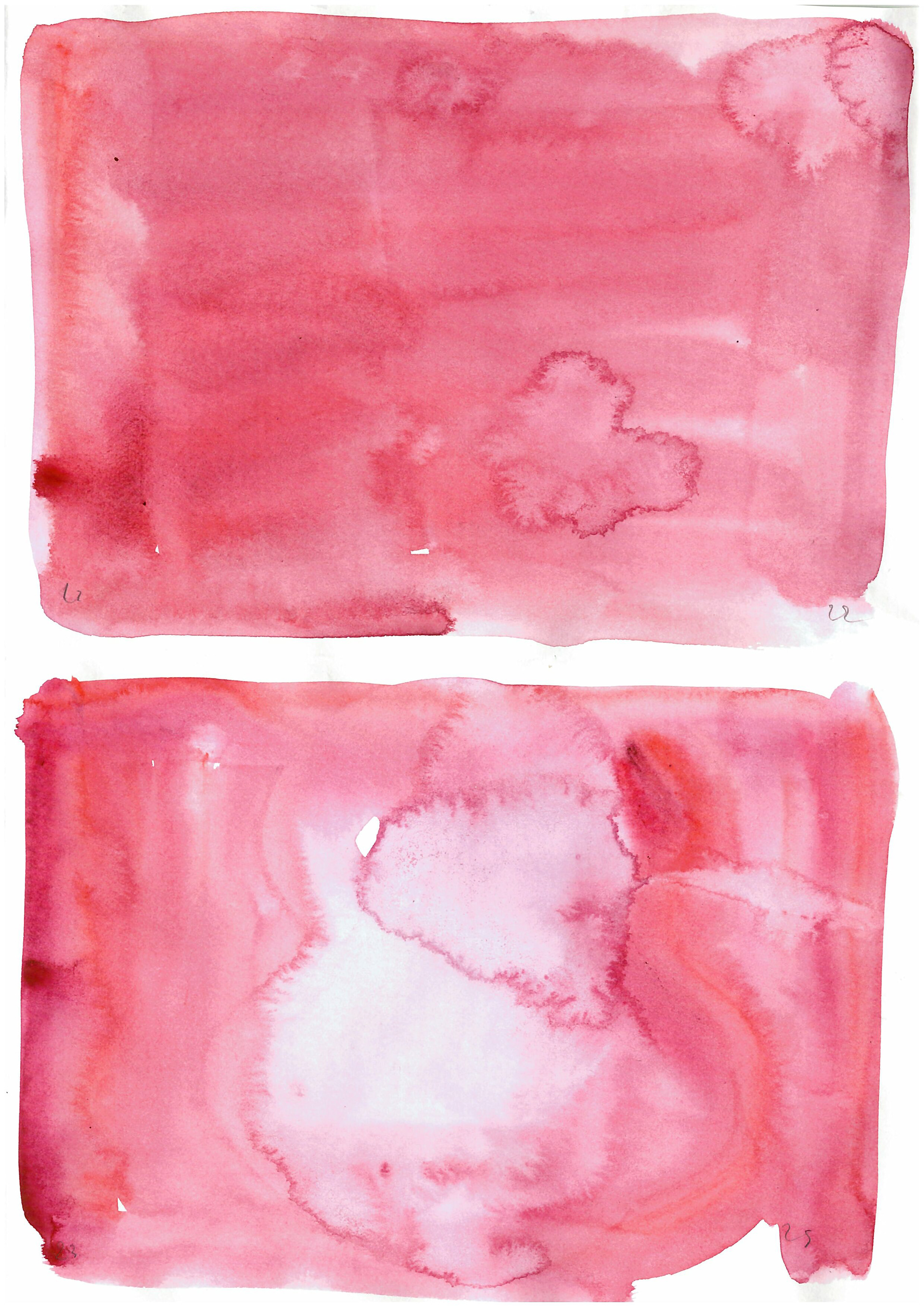
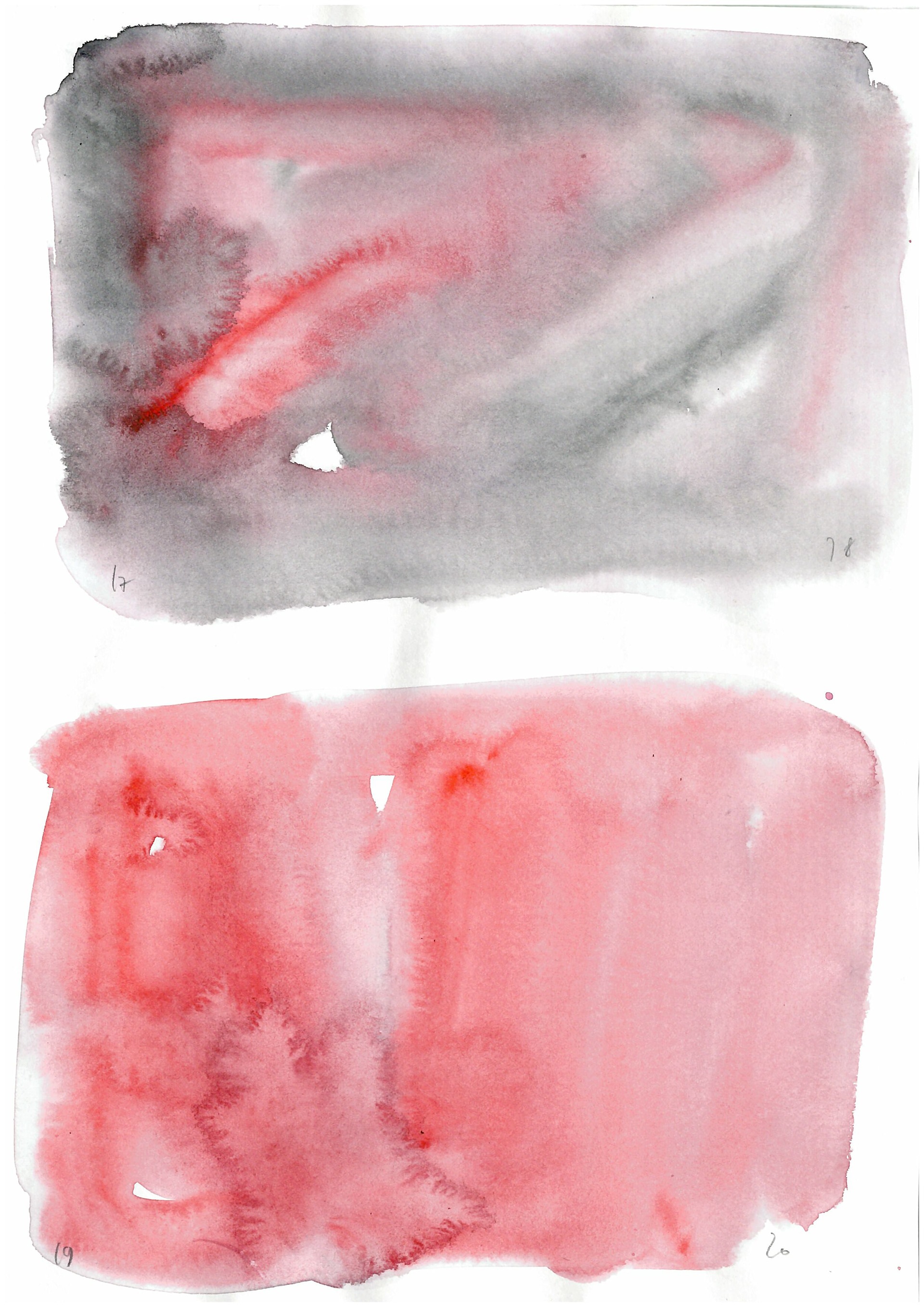
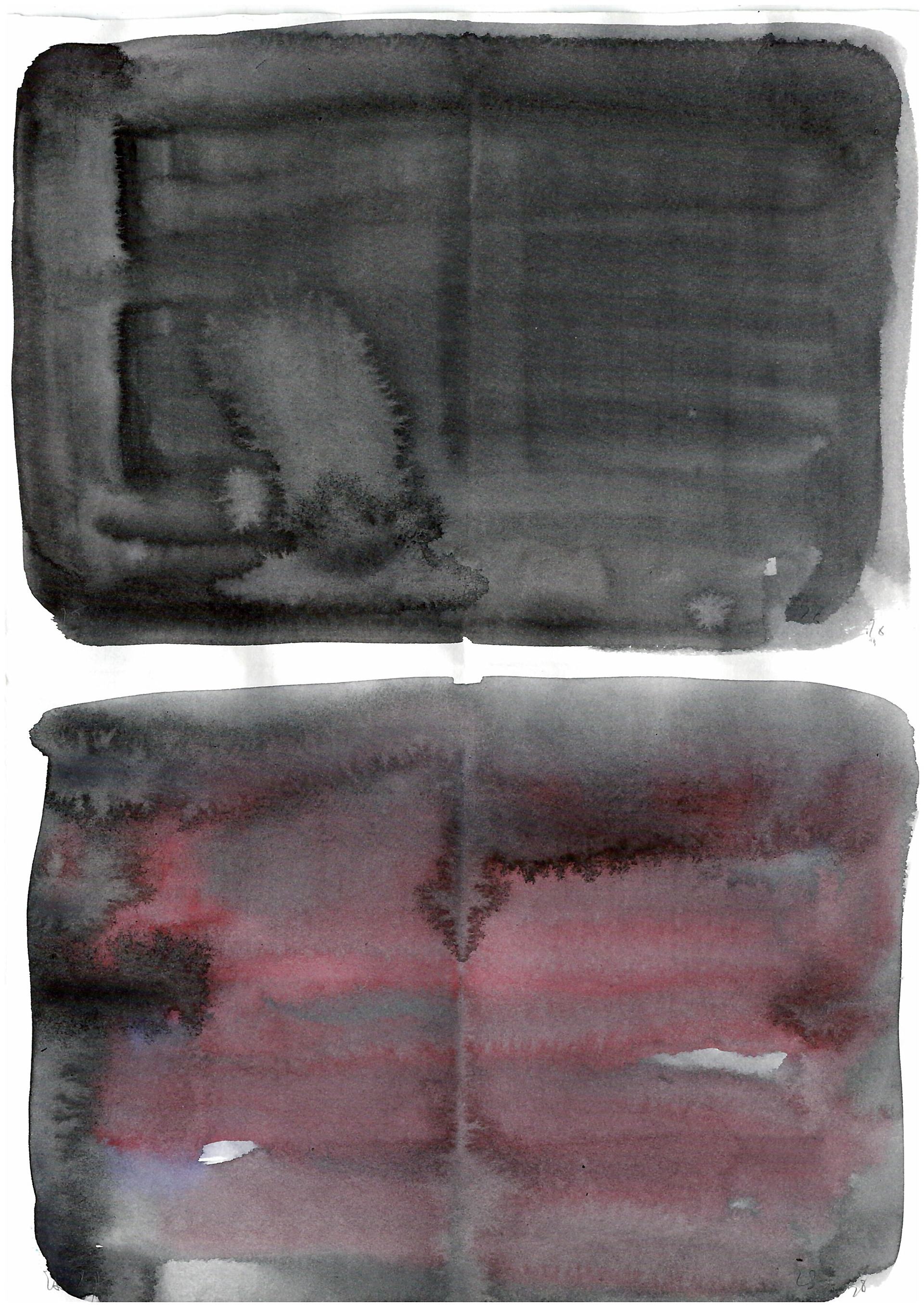
second mockup
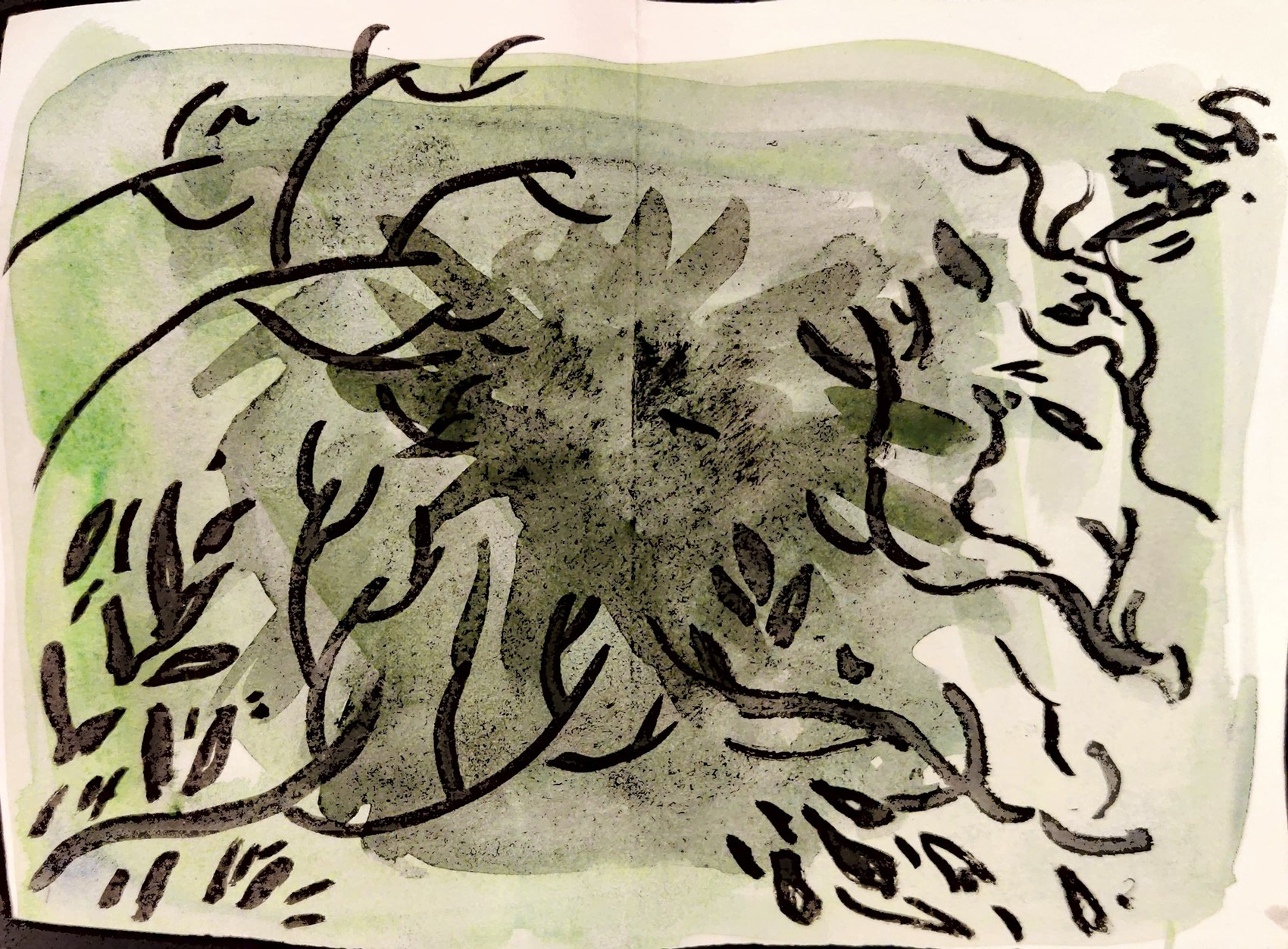
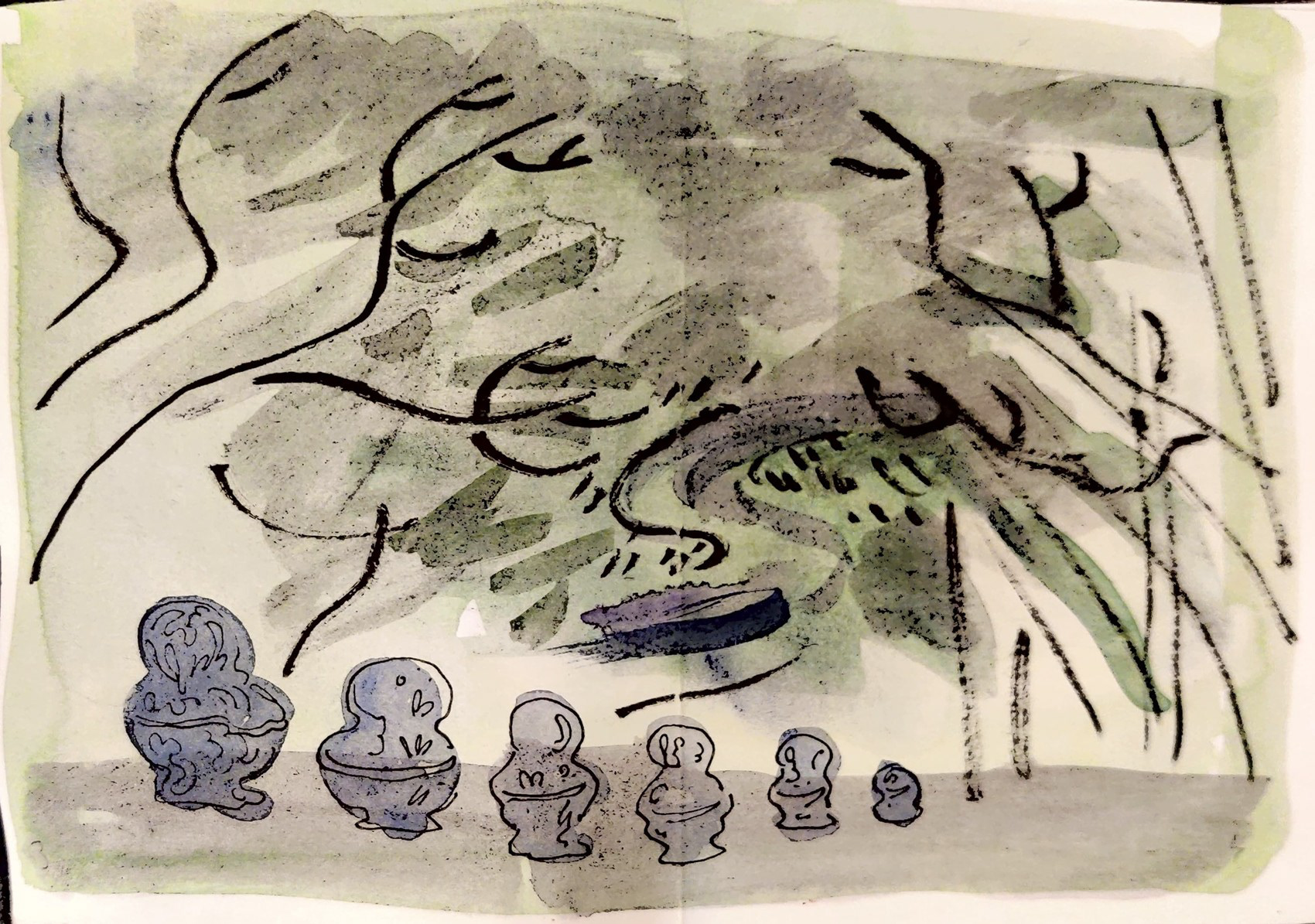
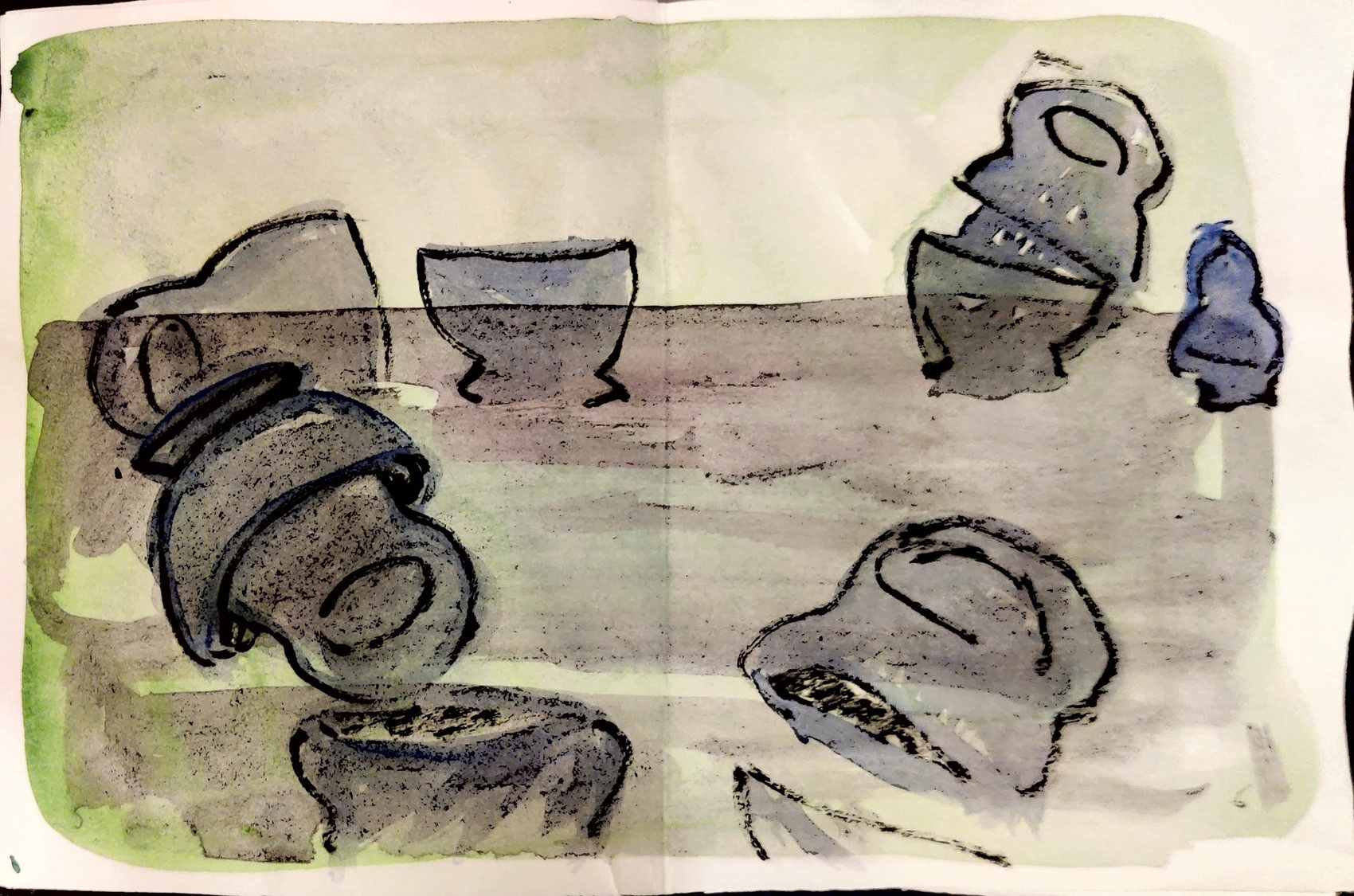
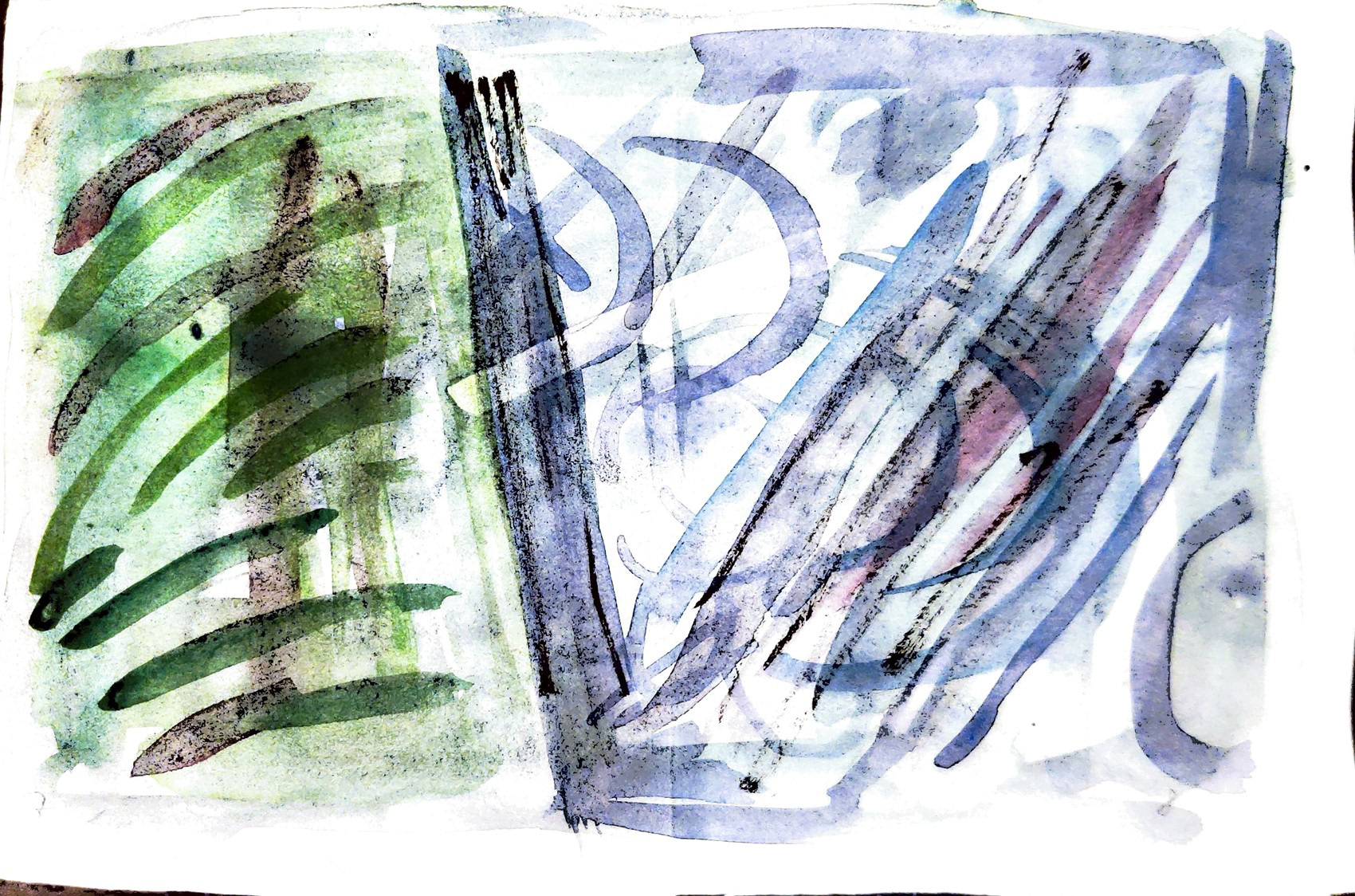



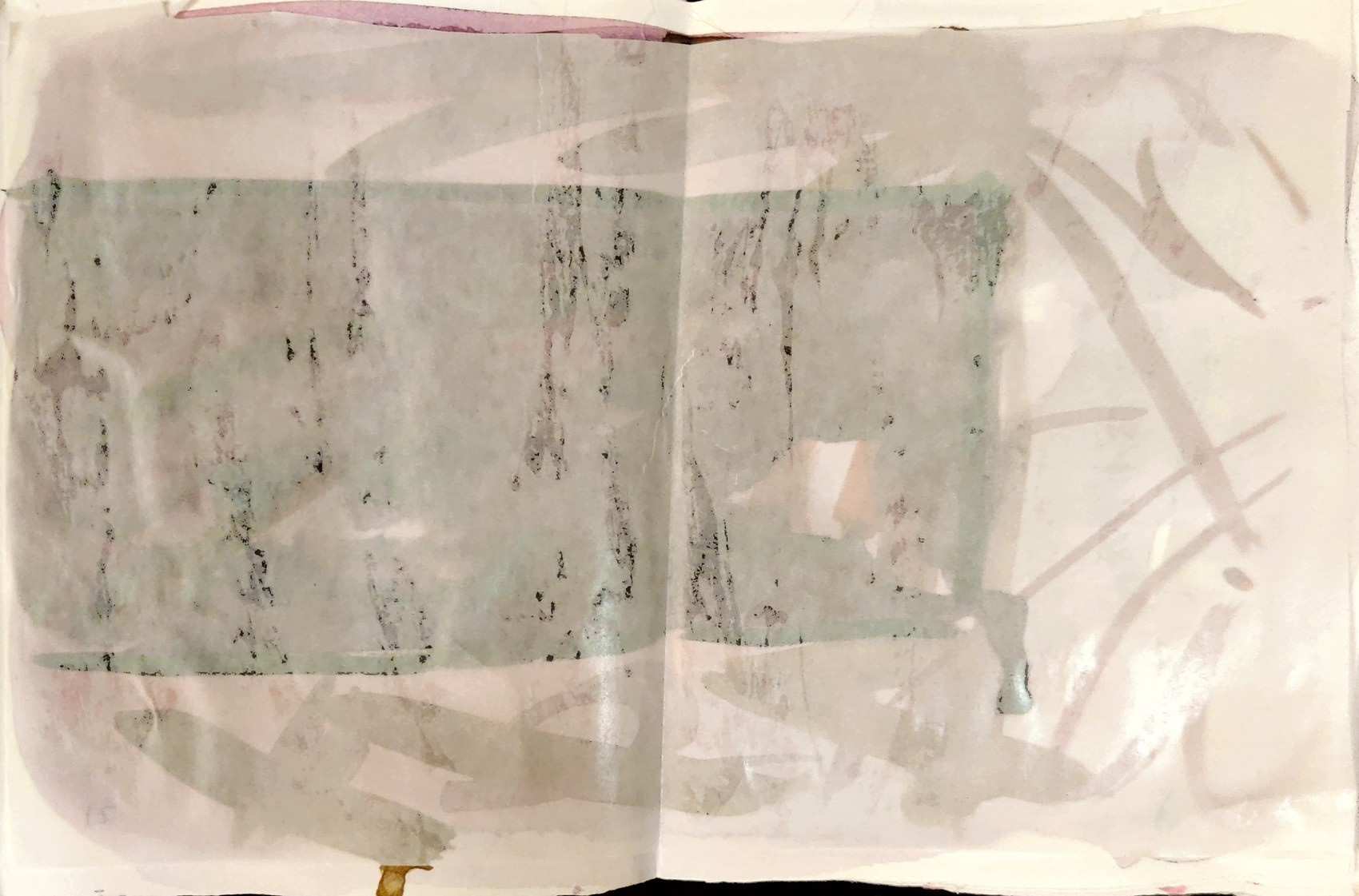

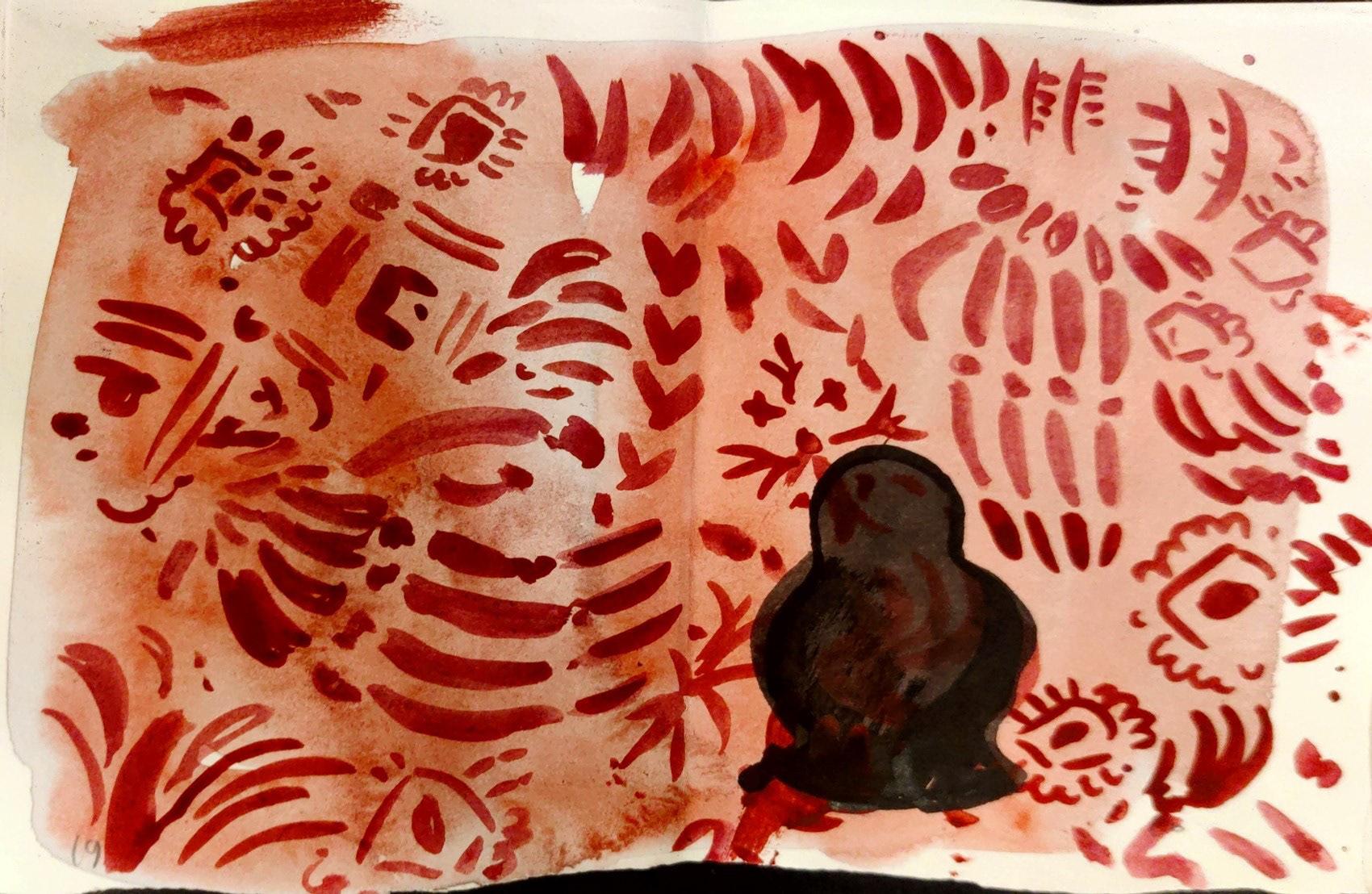

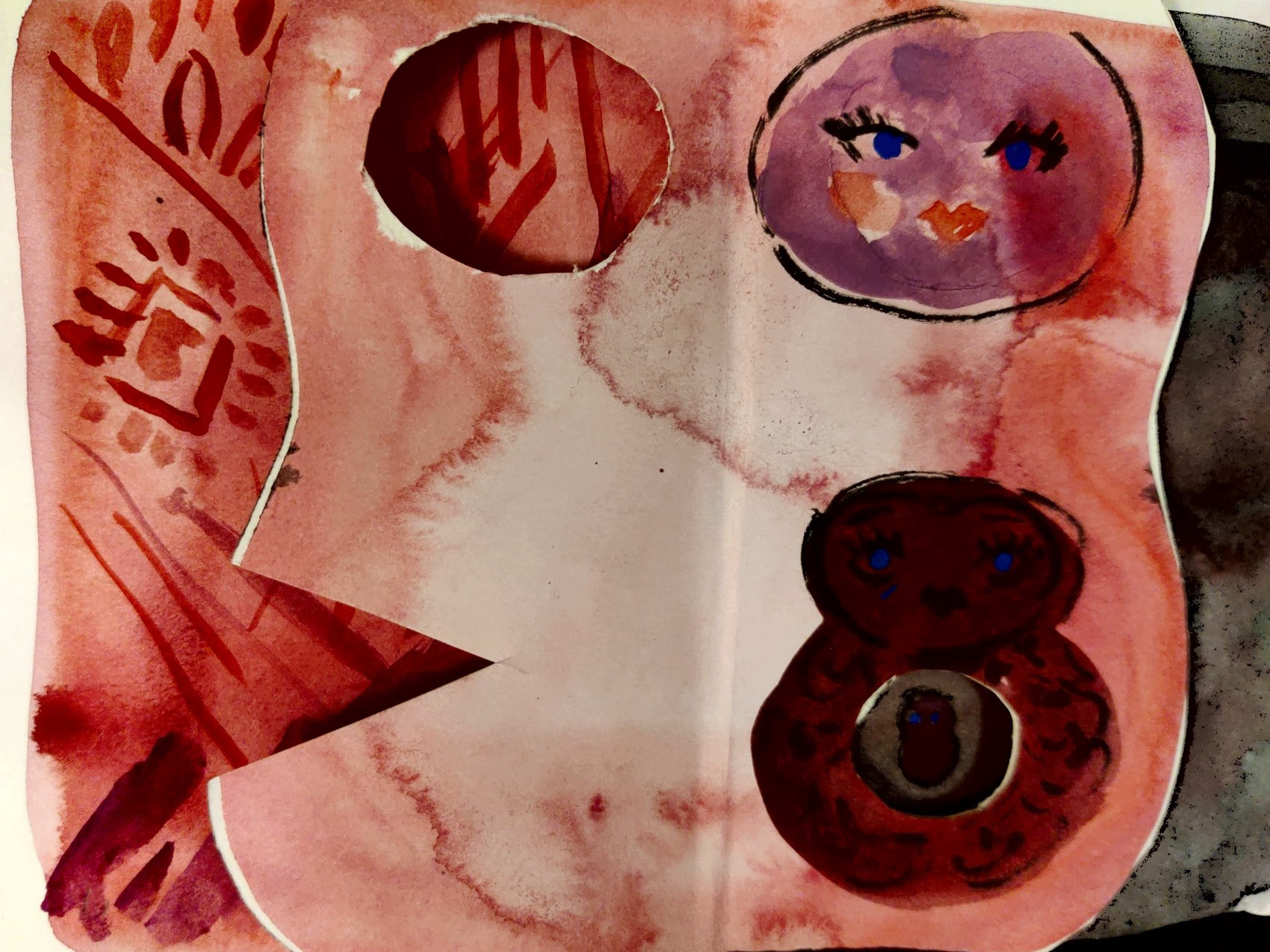
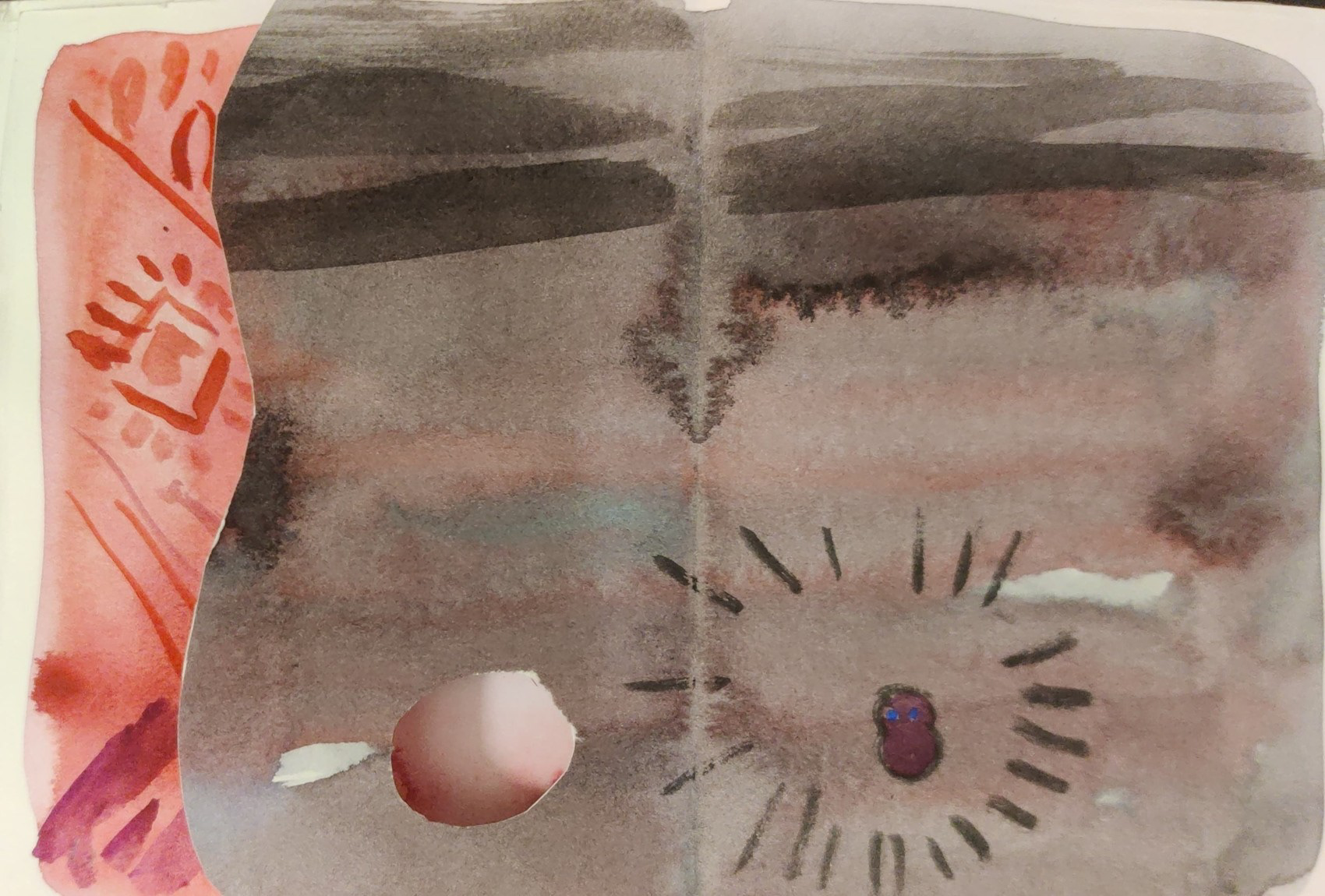

I feel like using a vague narrative while making the second mock helped me come up with some more ideas about how I want to visually present my theme.
For this brief, I was told it'd be a good idea to talk to other people to get a broader sense of how people cope with cultural separation, and why exactly they feel it.
While discussing this with people from Eastern European countries, there was an overall feeling of nostalgia enveloping the room, most people admitting to missing their old country. But, when asked to ponder why exactly they were feeling that, and what they were missing so much, most people either named mundane things like the weather or sour cream, which you wouldn't necessarily have a deep personal connection with, or, strictly personal things like family and pets, which aren't related to cultural identity.
Moreover, even though there is this ever-present melancholy for a past life, when thinking about it in detail, event by event, most were more unhappy than they are now, with their lifestyle in general or with future study and work opportunities. And yet, even with all that, people still miss their home country.
I think this really emphasises how important the feeling of belonging tends to be, seeing how the lack of it makes people feel nostalgic for a time they were unhappy.
To better understand this topic I decided to start doing more research on identity-related topics
Identity and Belonging
by Kate Huppatz, , Amie Matthews, , and Mary Hawkins
chapter 8 NATION-TIM ROWSE
exploring the concept of national identity
'In breaking away from empires, the idea that each ‘people’ should decide its own destiny has justified new sovereign political formations: to each ‘people’ its own nation-state. ‘Peoplehood’ has usually been evoked in terms of ‘ethnicity’, that is, a people’s collective memory of being of one blood, one tongue and (usually) one faith. Smith has concluded that while ‘not every modern nation can point back to an ethnic base’, for political elites to recite a story of shared ethnicity has been a prominent theme of enduring nation-hood (Smith, 1991, p. 41)'
Huppatz, Kate, et al. Identity and Belonging, Bloomsbury Publishing Plc, 2015. ProQuest Ebook Central, http://ebookcentral.proquest.com/lib/ntuuk/detail.action?docID=4763814.
Created from ntuuk on 2023-11-06 14:31:24.
Huppatz, Kate, et al. Identity and Belonging, Bloomsbury Publishing Plc, 2015. ProQuest Ebook Central, http://ebookcentral.proquest.com/lib/ntuuk/detail.action?docID=4763814.
Created from ntuuk on 2023-11-06 14:31:24.
chapter 10- MIGRATION- MARY HAWKINGS
Compared to the past, migration is not always permanent. For many people today, migration can be temporary, and even if it's permanent it doesn't necessarily imply a total removal from the home country, as travel and communication has become more accessible. This means that, in some ways, migrants can occupy two places at once, which can construct a new identity that doesn't necessarily belong in either place.
In the case study presented in this chapter, a Bangladeshi woman named Dipti has managed to migrate to Australia and is now able to support her extended family. However, even now, she is subjected to the same social scrutiny as she was in her country; her relatives, instead of being thankful, see her as a disgrace as she is not married. Even though she is living in Australia, she is sends most of her money to Bangladesh, in return being scrutinised by them. Even though she left the country, she is still heavily affected by the culture and social norms. This is an extreme case that demonstrates the bicultural nature of living abroad.
AUDIO-VISUAL
I am nervous to begin this part of the project as I haven't really experimented with animation in the past.
For my first attempt at creating a moving image I was inspired by one of the pictures in my mock-booklet where I was experimenting with using patterns.
Here I tried drawing some flowers turning into hands and then joining and becoming a single flower.
I think the result is OK for my first attempt at making a picture move.
For my next attempt I decided to go for something with simpler shapes to try to make something cleaner.
I also wanted to make it into a looping image.
I tried playing it at different speeds to see which result is nicer.
In the future I will definitely try to line the pictures up more and crop the outside of the frame as it is quite distracting to look at.
I am not really sure what to do for the audio-visual part of the project, so I decided to experiment for a bit.
I tried using print to see what happens when I overlap them. I carved two small pieces of lino and tried printing them at different distances. It didn't go very well, the result looks quite terrifying, which isn't really what I was going for, but something that I will consider in the future if I want to create any unsettling work on purpose.
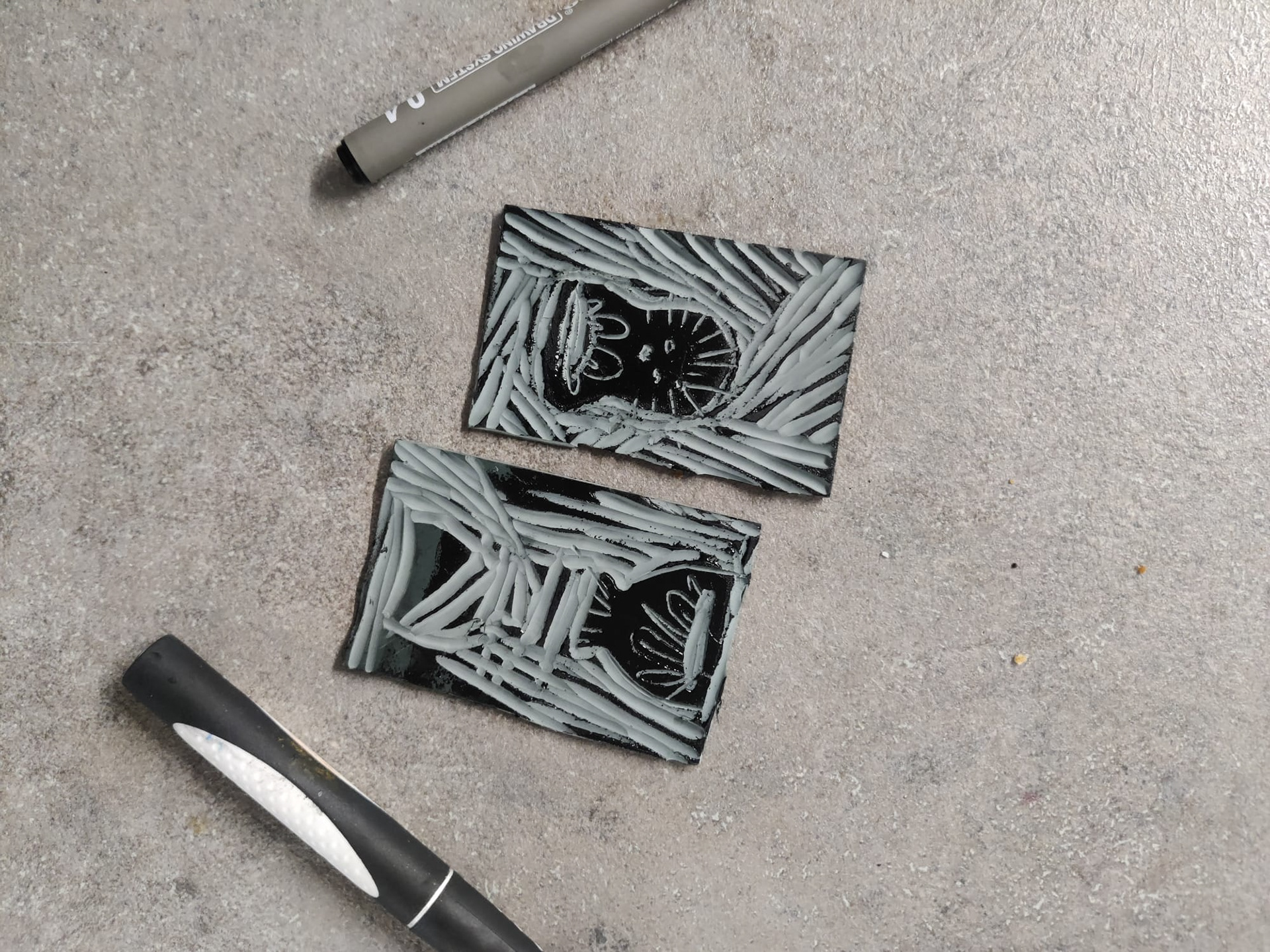
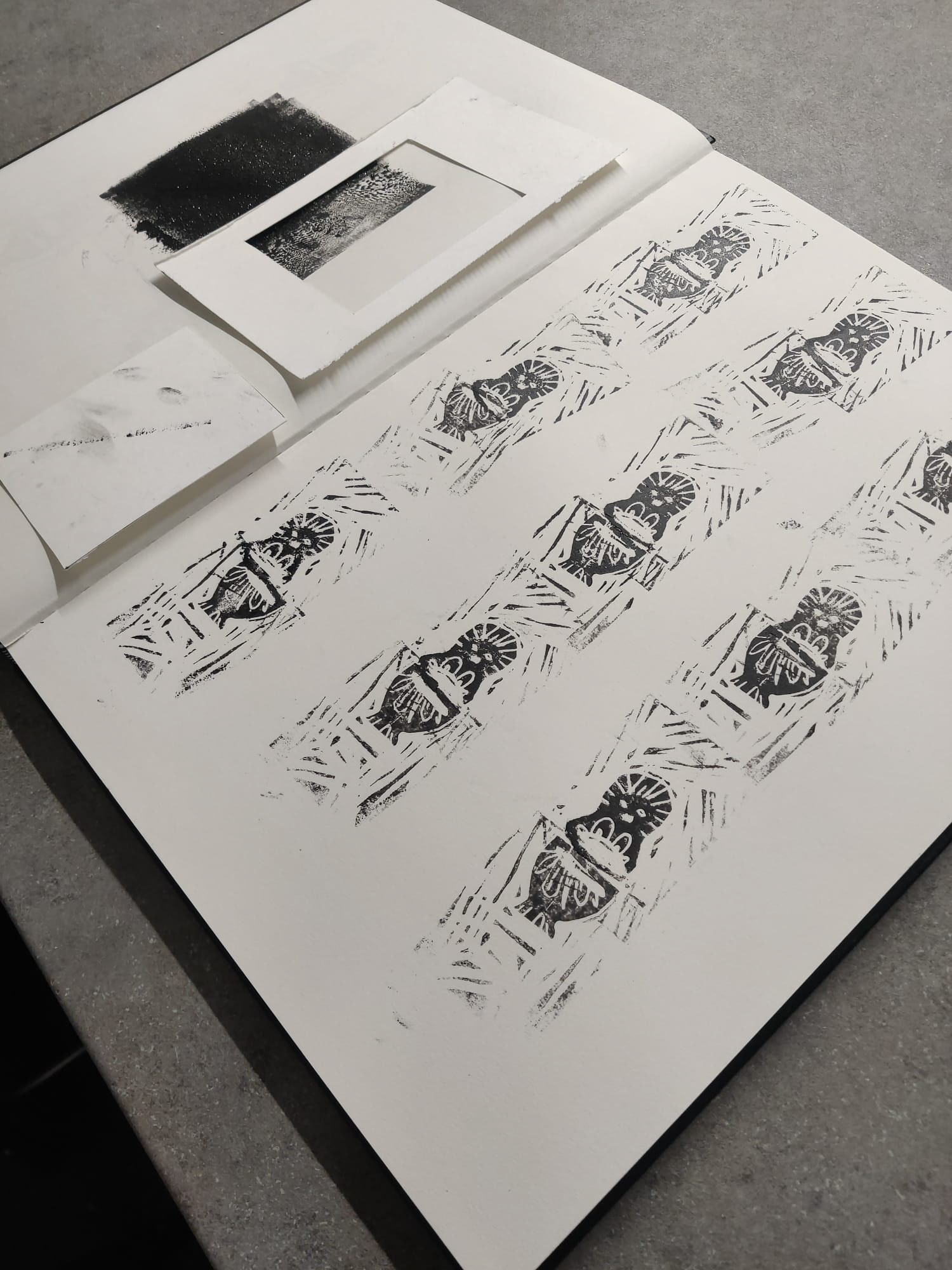
Reflective writing workshop
In this workshop, we were tasked to reflect upon an audio-visual piece we had a day and a half to do.
When we got this brief, I was really excited to do it, but things got in the way so I was not able to get a satisfactory result on time, so I decided not to submit it.
Even though I didn't submit it, I'm still glad I finalized it as I was able to learn new things while making it such as animating in Adobe Photoshop and how to use the basic functions of Adobe Rush. It was overall a great opportunity to take the time to learn how to use some new software, especially since it took me a while to get the hang of it. From a technical standpoint, and considering that this is my first digital animation, I think it went quite well and I am happy with it. In the future, I will try to explore more advanced aspects of this, for example figuring out how to colour and shade things in and add a more complex background, as well as making the animation smoother and more consistent.
I wish that ever since the beginning, I would've thought more about the audio I was assigned and came up with an outcome that would've fit it better, as one of the problems that I had with this work that led to me not submitting it was that I felt the animation didn't really match the drama of the audio. I tried to add some drama into it by having the lonely acorn be left behind, but I think it's clear that I didn't plan this out as well as I should have, which made the animation juxtaposed with the music feel quite goofy.
I think the main thing that made me not submit it is the fact that to me it feels obvious that I didn't give myself enough time to think about this piece as I changed my idea at some point while making this.
My first idea for this brief was to draw a group of sparrows flying around as this is something that's very chaotic and it would've fit the dramatic music way more, but I decided to not do this as I started it with traditional drawing so it would've taken way longer, and combining traditional with digital animation would've been a whole new skill to learn, which I didn't have time for. Therefore, I changed my idea to something simpler that doesn't really fit the music.
I think that I shouldn't have felt so pressured by the short amount of time we had to do this, and I that I should've taken more time to think of a better plan of doing something that's simple enough to finish but that still fit the assigned brief( in this case making the audio and visual elements work together).
Another factor that influenced this sad outcome is the fact that I was feeling overwhelmed by the Contemporary Issues in Illustration presentation, ad I couldn't wholly focus on working on this outcome. This is something that I want to improve on, as, in the future, I won't always be able to take a break from a project when I'm stressed about another project.
I the future I will try to focus on each brief, even if it's a small task like this, and try to think trough what I should be doing so I don't change my mind halfway trough. Another thing I want to improve on is being more conscious of the work that I am able to take on and manage accordingly so that I am able to be done.
If I had to do this again, I would make it my priority to choose something that works well with the assigned audio. Moreover, in the coming weeks, I hope to get better at animation and using movement in my illustrations so that I become more confident in this. Also I want to explore ways that will help me become more efficient such as combining digital and traditional art elements.
I figured I should do something different for the audio-visual part of the project, so I decided to look towards birds, specifically swallows, since they are migratory birds, which could fit into my chosen theme. I tried drawing their flight pattern.
Going back to the book
It's the last week for the amplify project, and I am still lost on what to do, so after drawing some thumbnails I decided to branch out with my research yet again. I've really been struggling with what imagery I want to portray in the zine, as well as the order that I want to do this in.
I decided I will be looking at interpreting messages trough visual means. I will also turn to surrealism as I feel like surrealism cinema specifically could be a great thing to look at because of the abrupt cuts and the allegories, or for example the juxtaposition of logically incongruous shots.
Also, I feel like since my topic is a bit abstract and not very tangible, a surrealist approach might be a better way of going about it.
Andre Masson

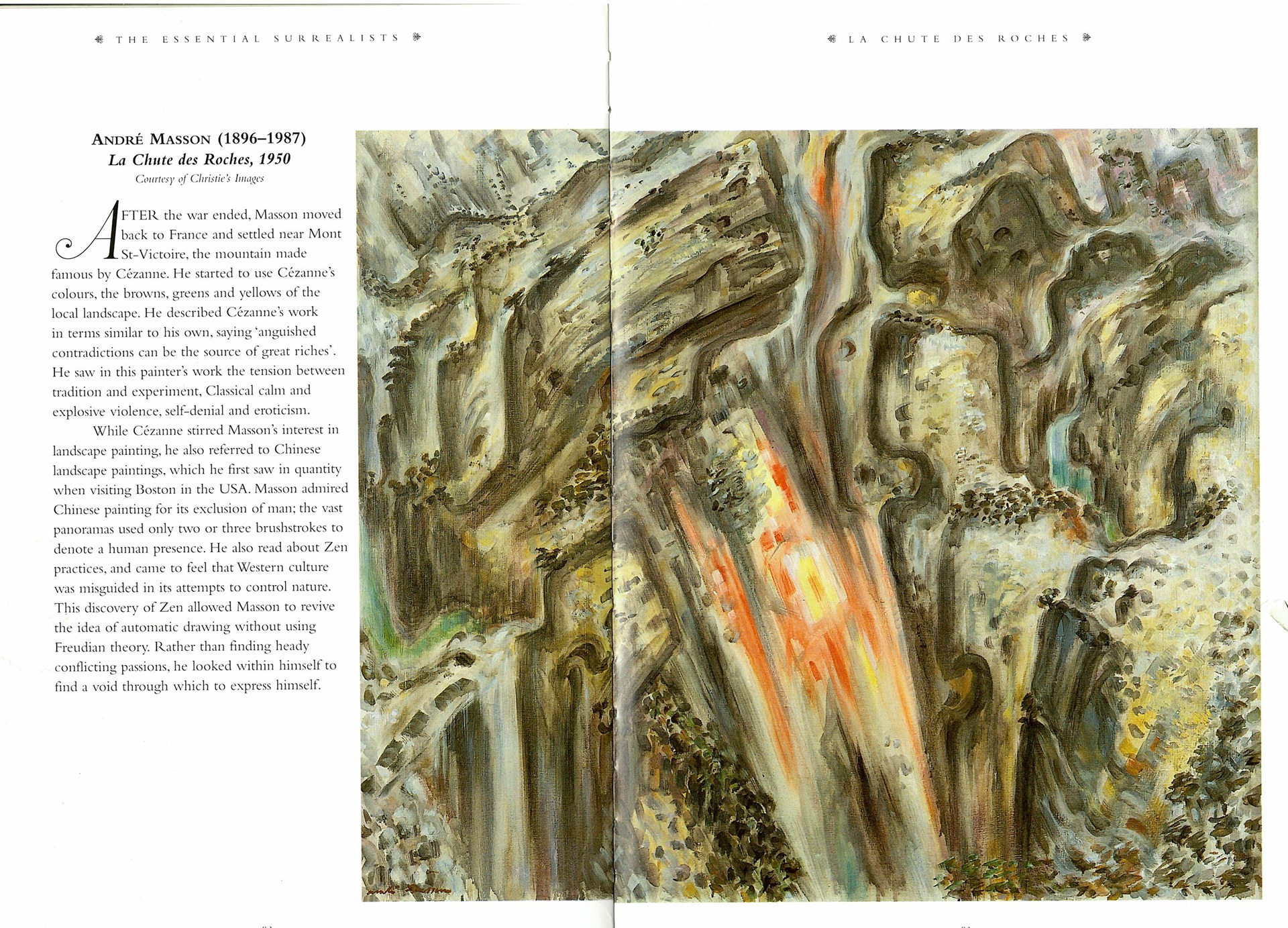
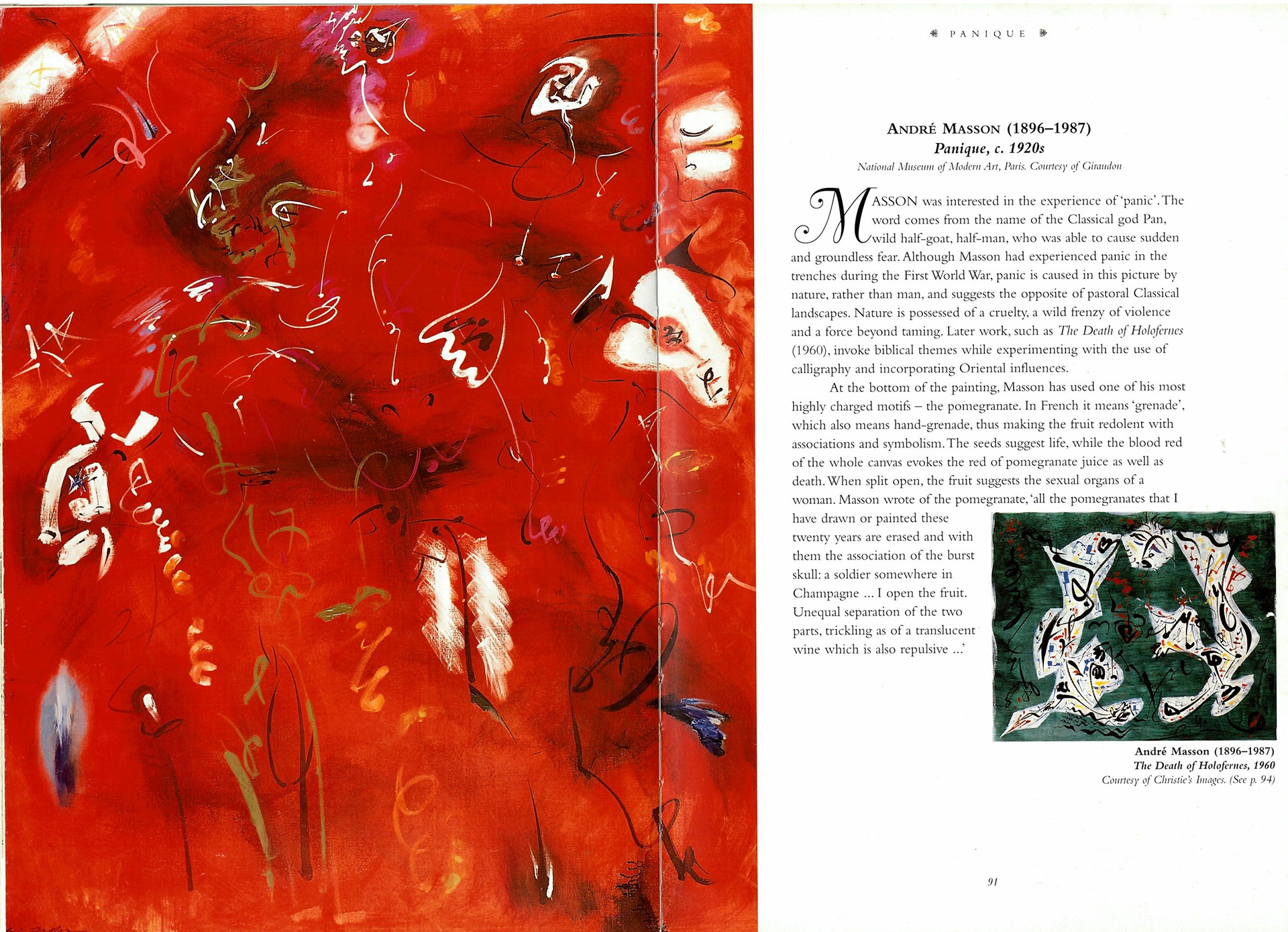
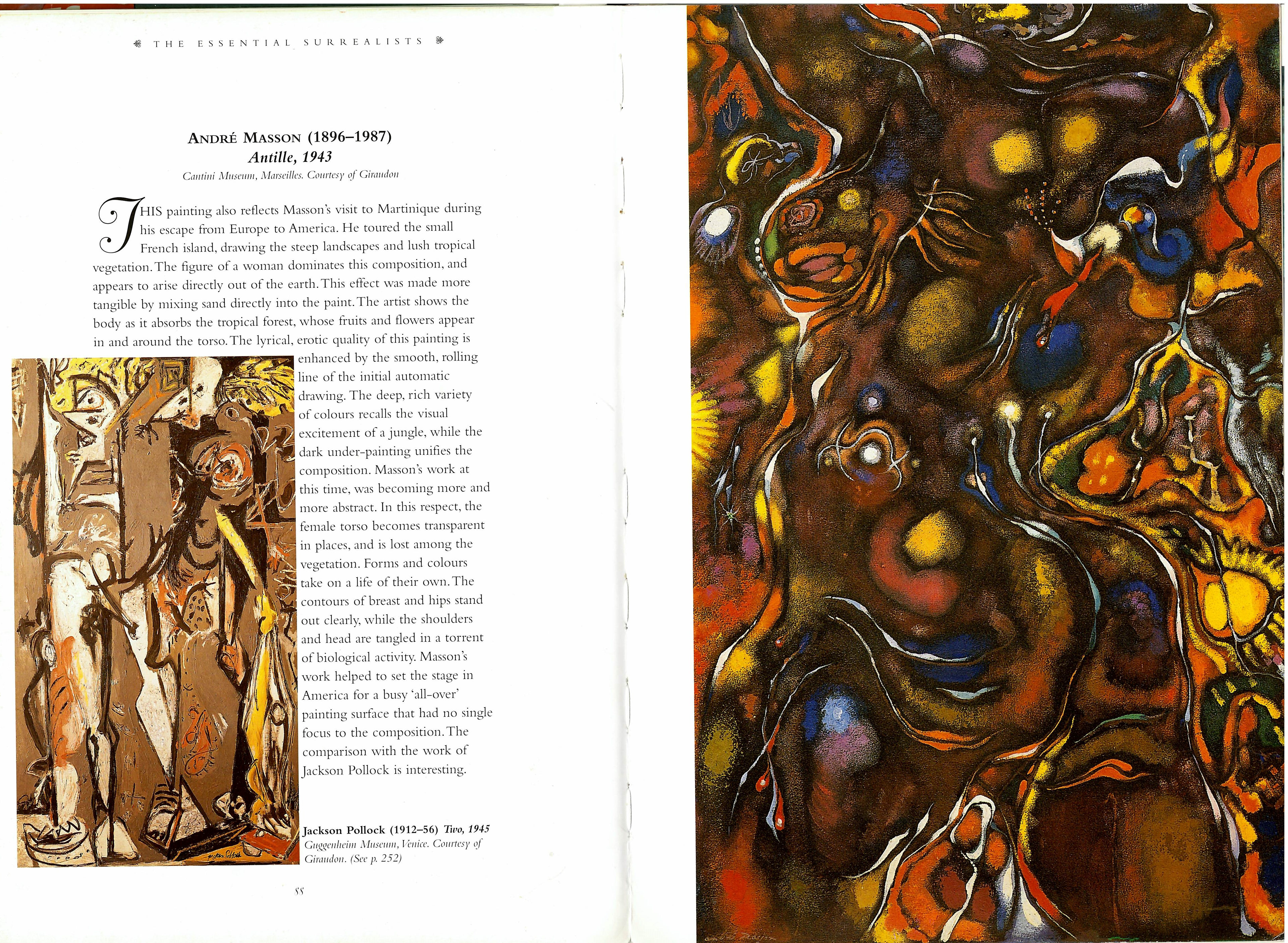
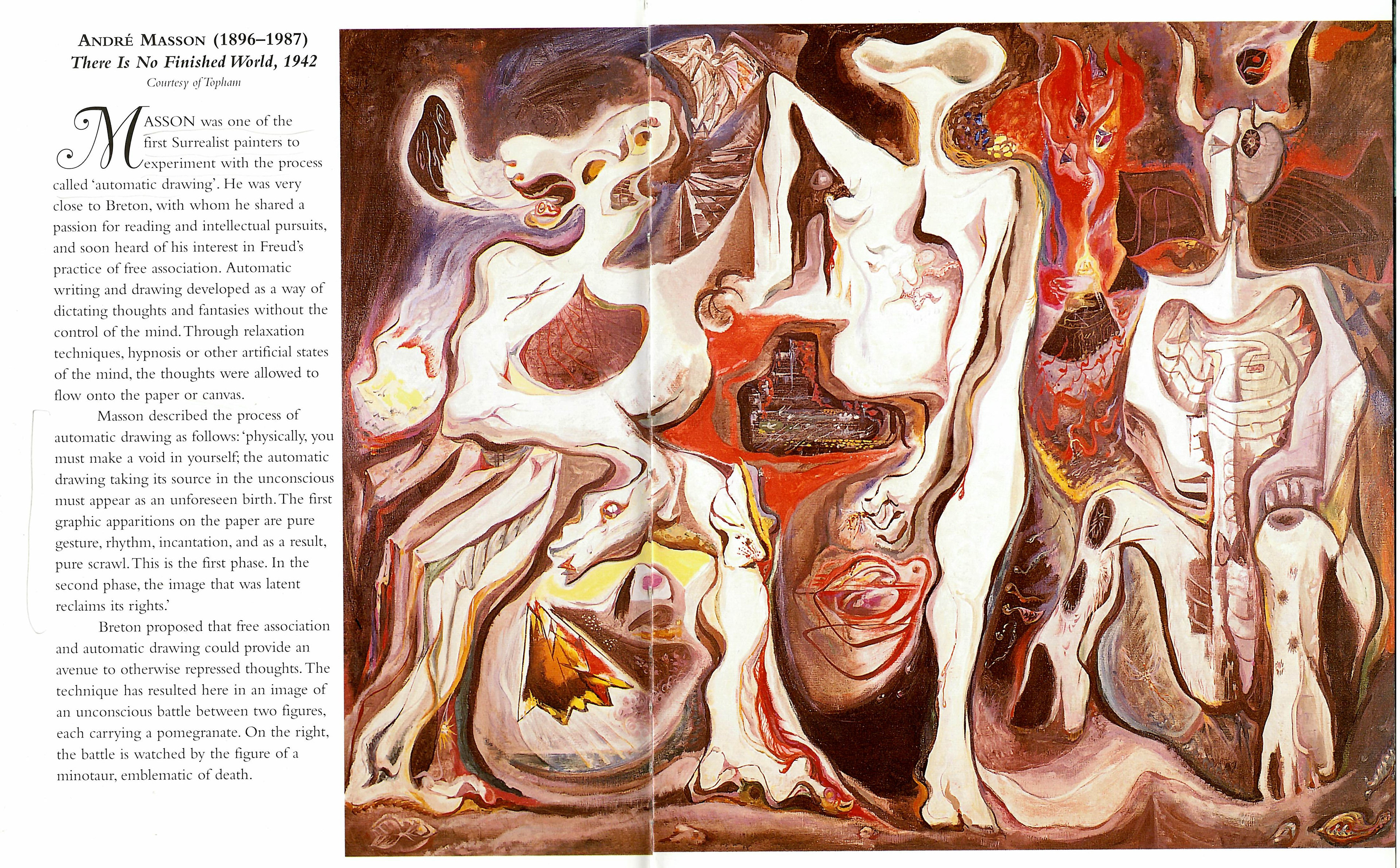
Max Ernst



I started going back to making loads of thumbnails and drawing patterns to try to come up with more ideas. I feel like at this point I am just needlessly postponing starting the final outcome because I still feel unsure about what exactly I am saying with this book.

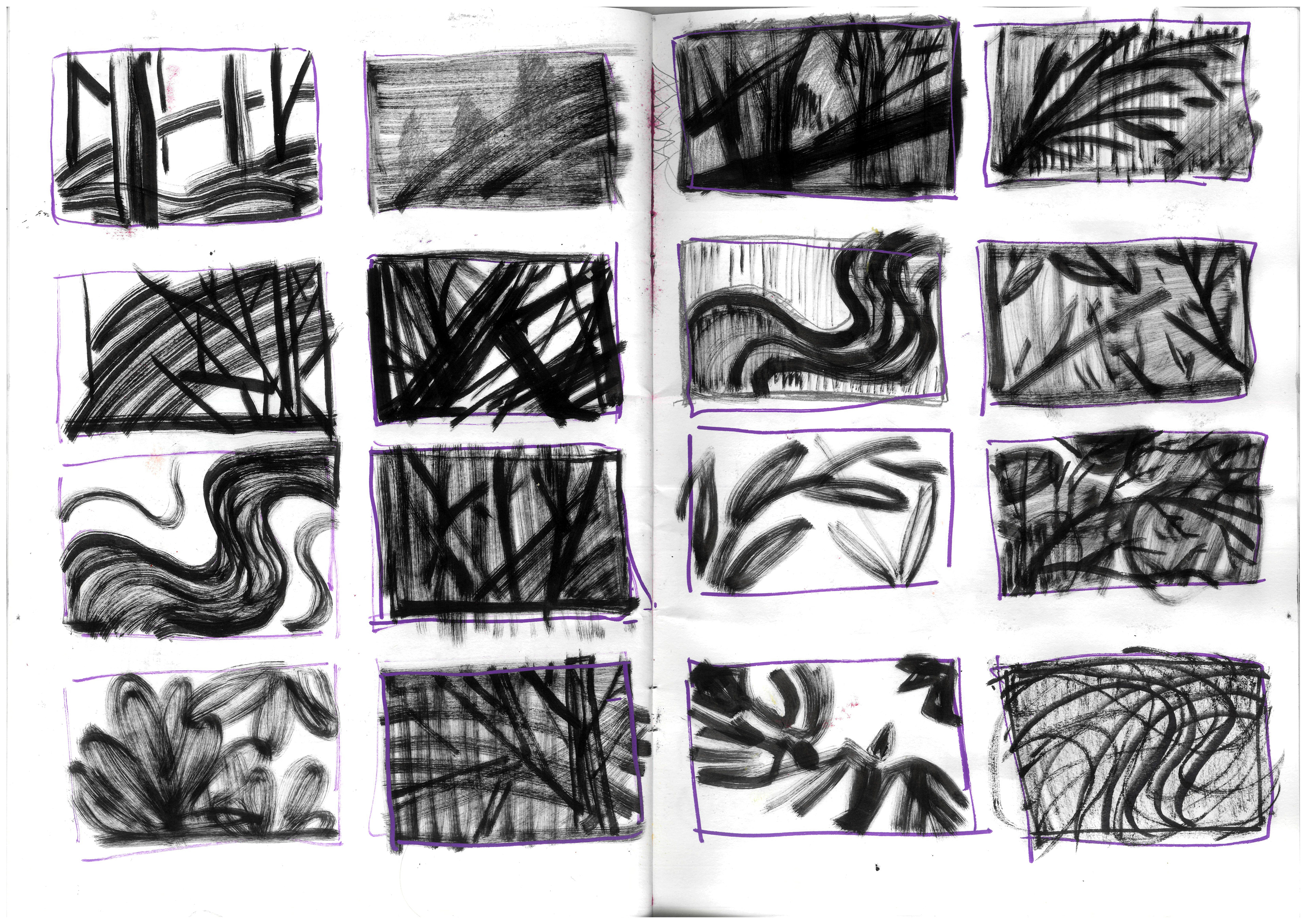
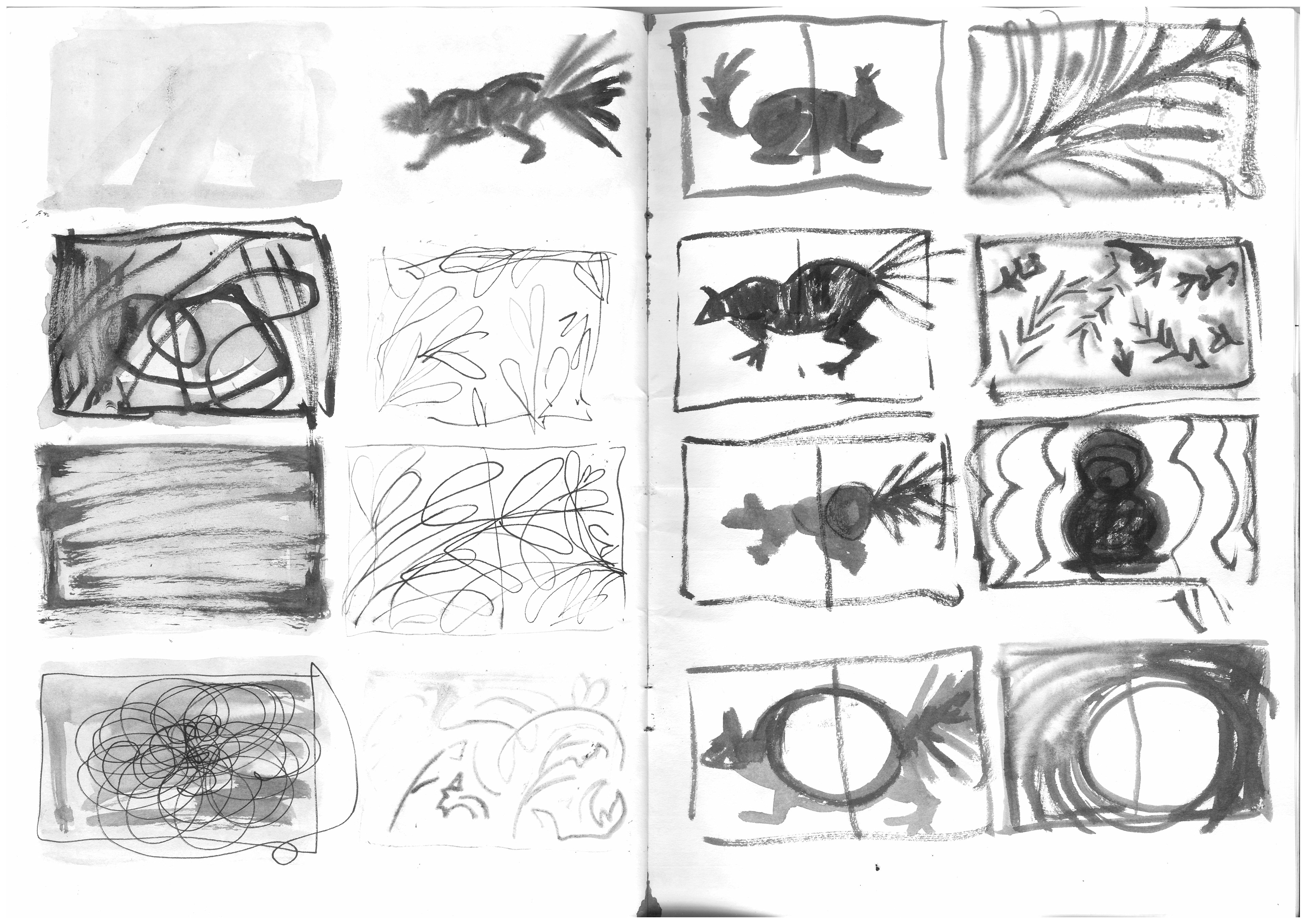

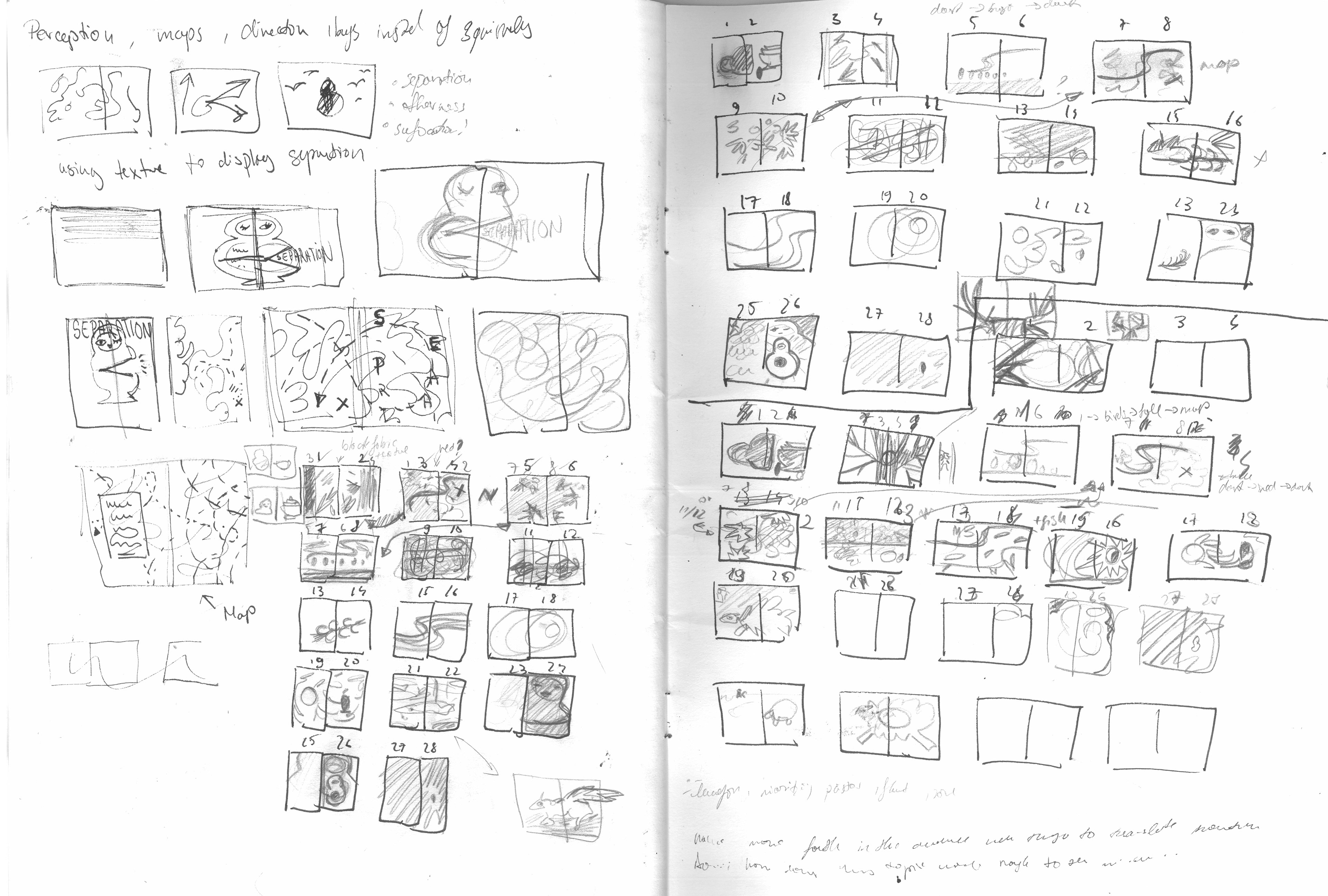


Another mock-up
I rearranged the pages a couple times and then I made my final mock-up.
In the end I decided to show 2 stories that are intertwined. (about the nesting dolls + the birds). I I didn't clearly define the stories, but kept them kind of vague which has become a sort of theme for this project due to my lack of knowing what I was doing in the beginning and not being able to put my feelings into words.

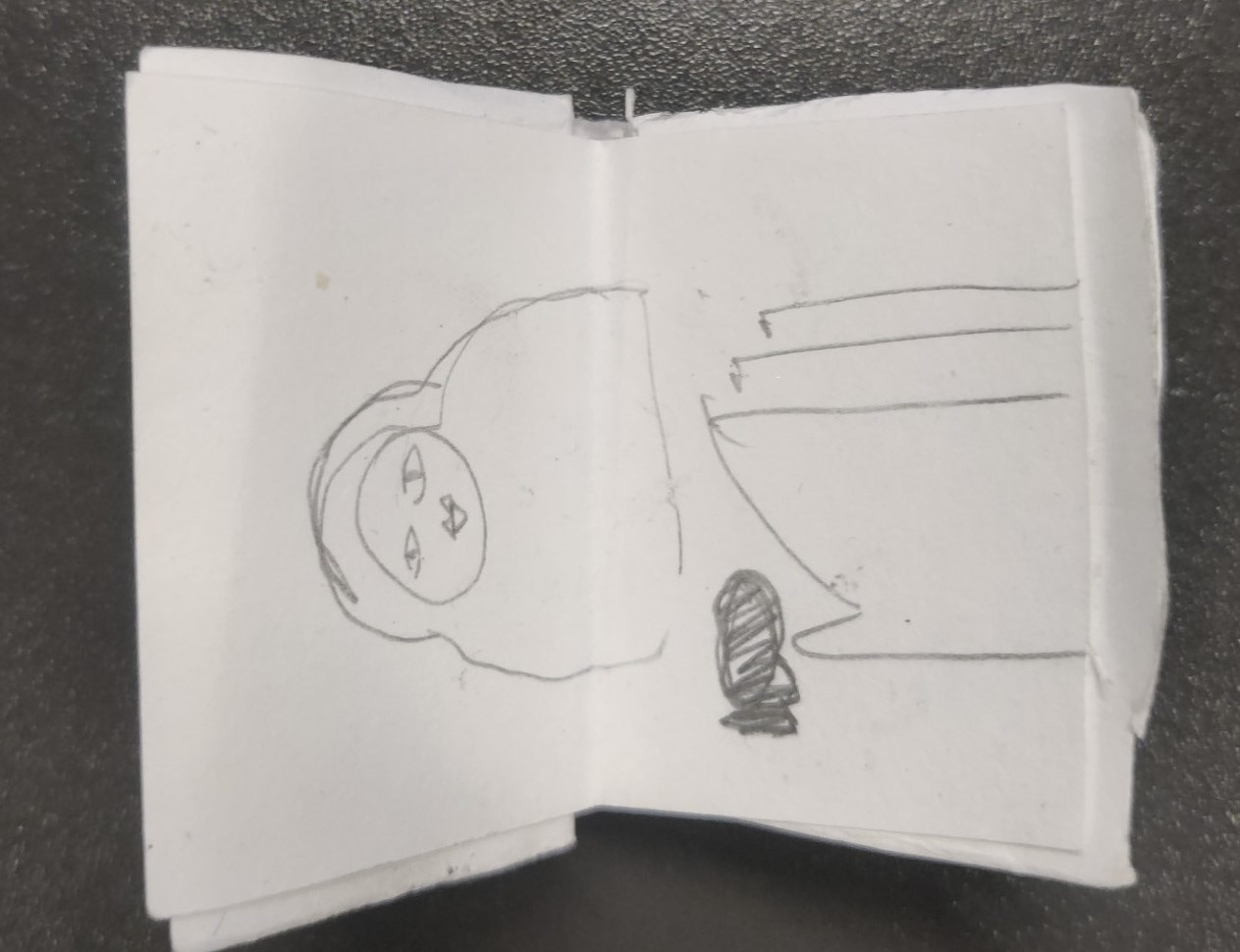
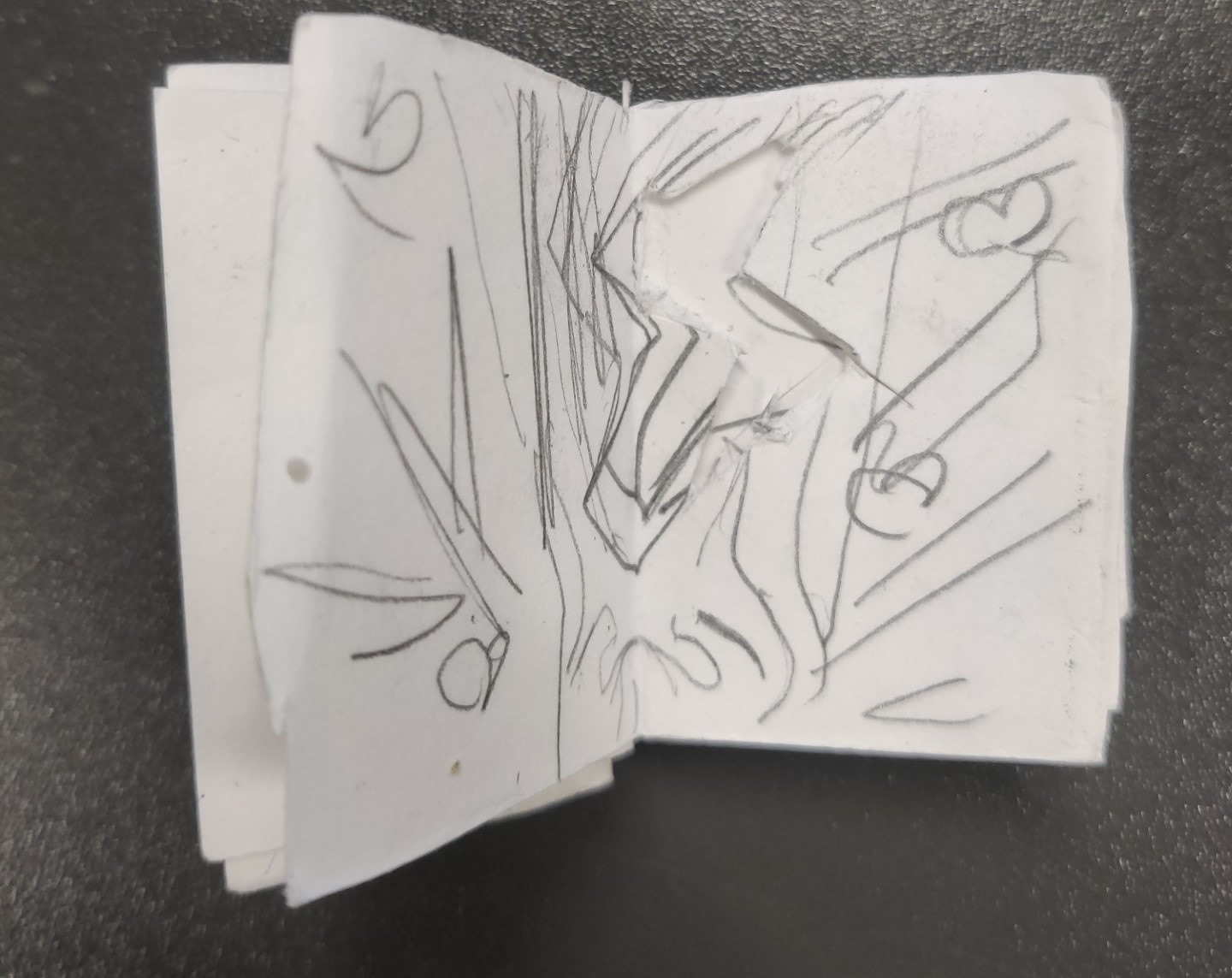
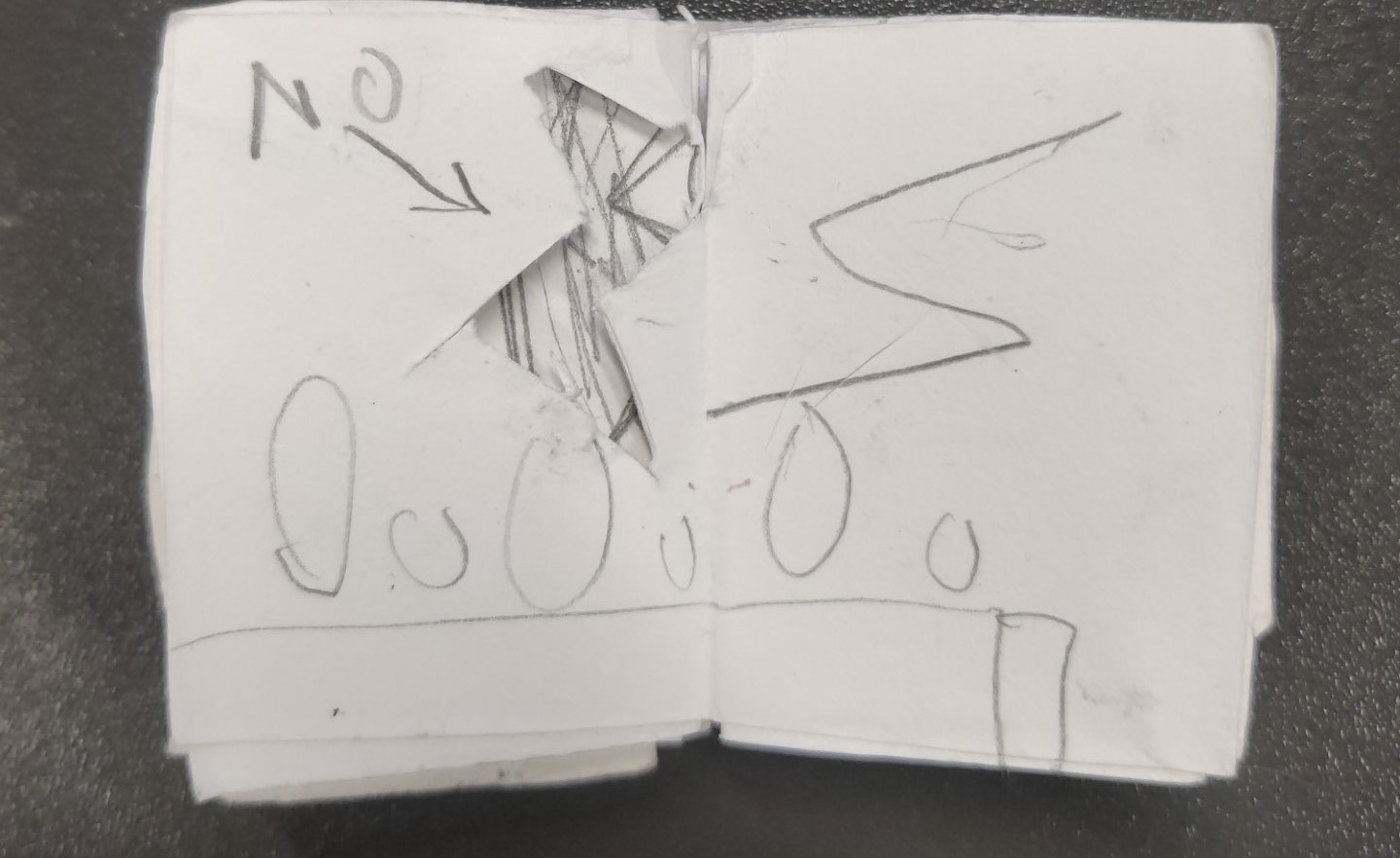
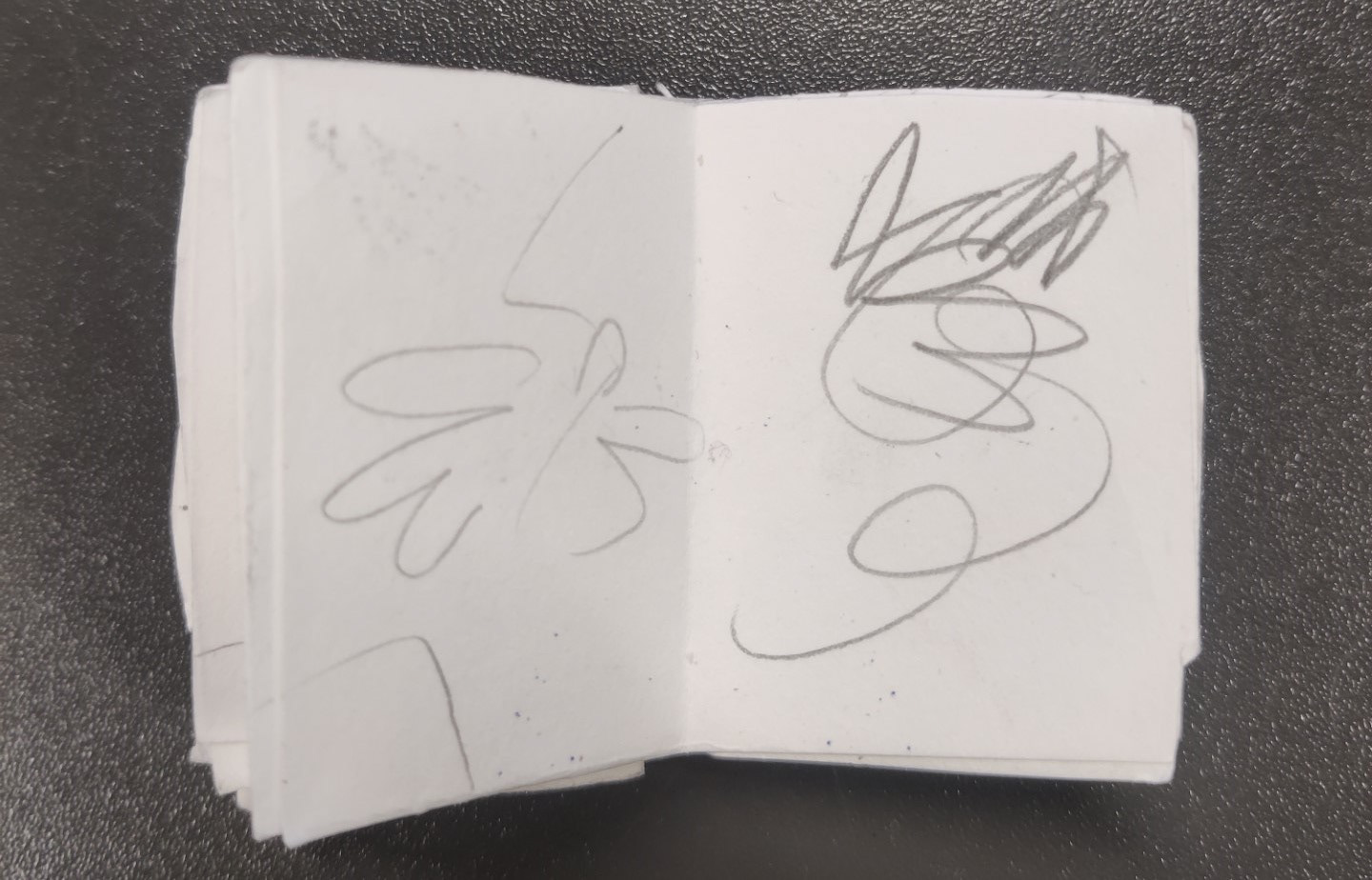



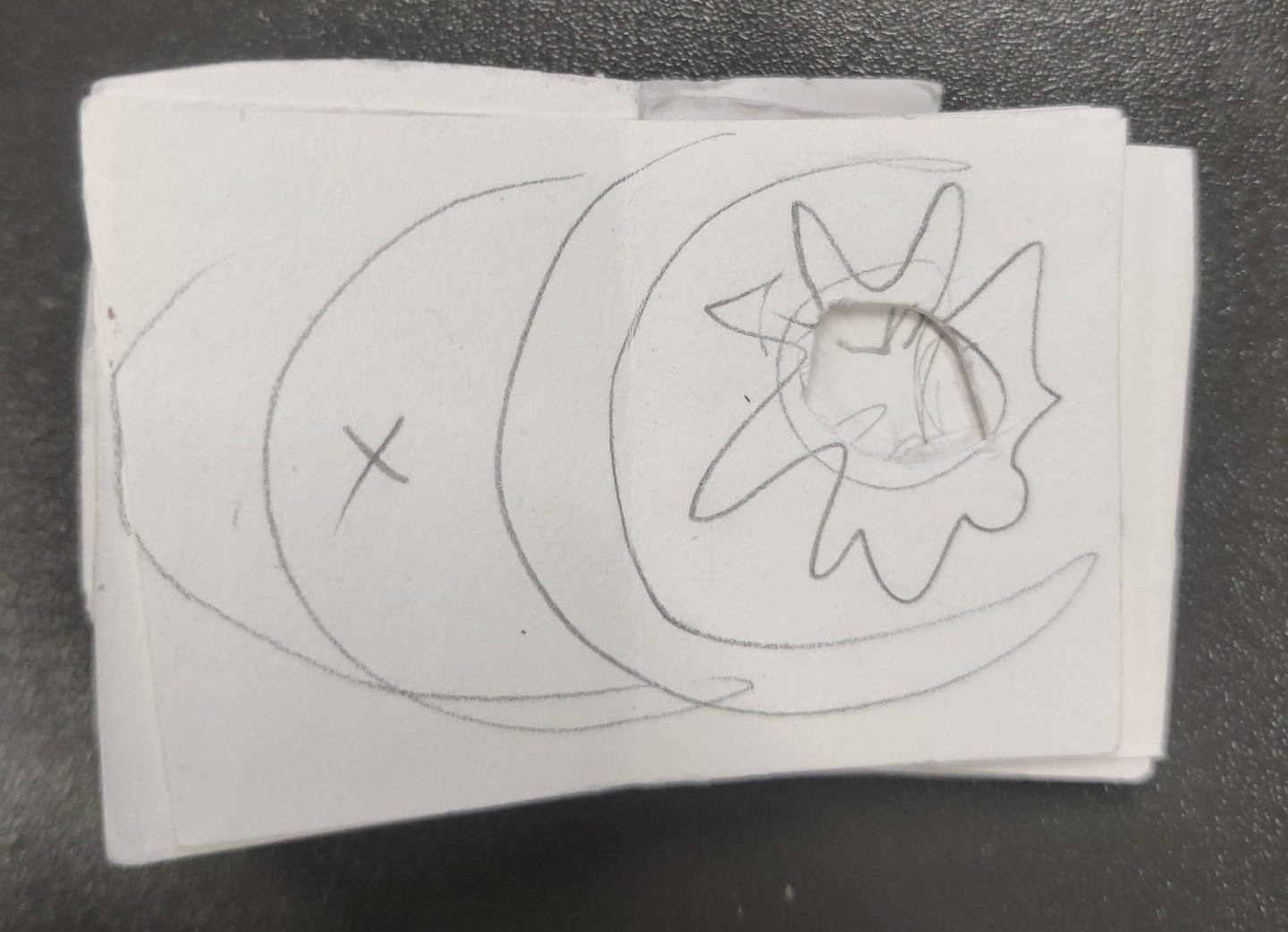

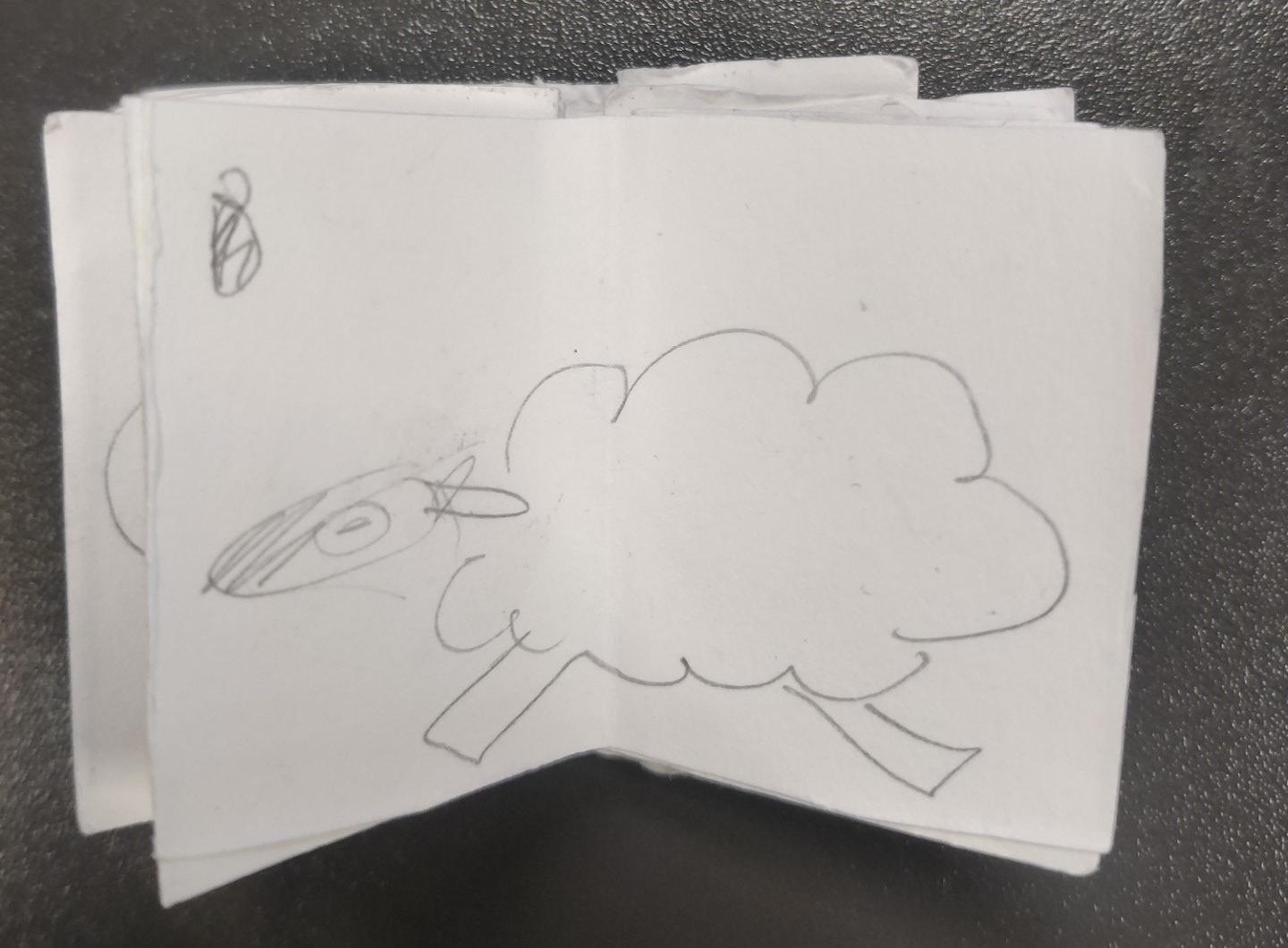




I test printed the book a couple times to see how the colours and layout look.
Final test print


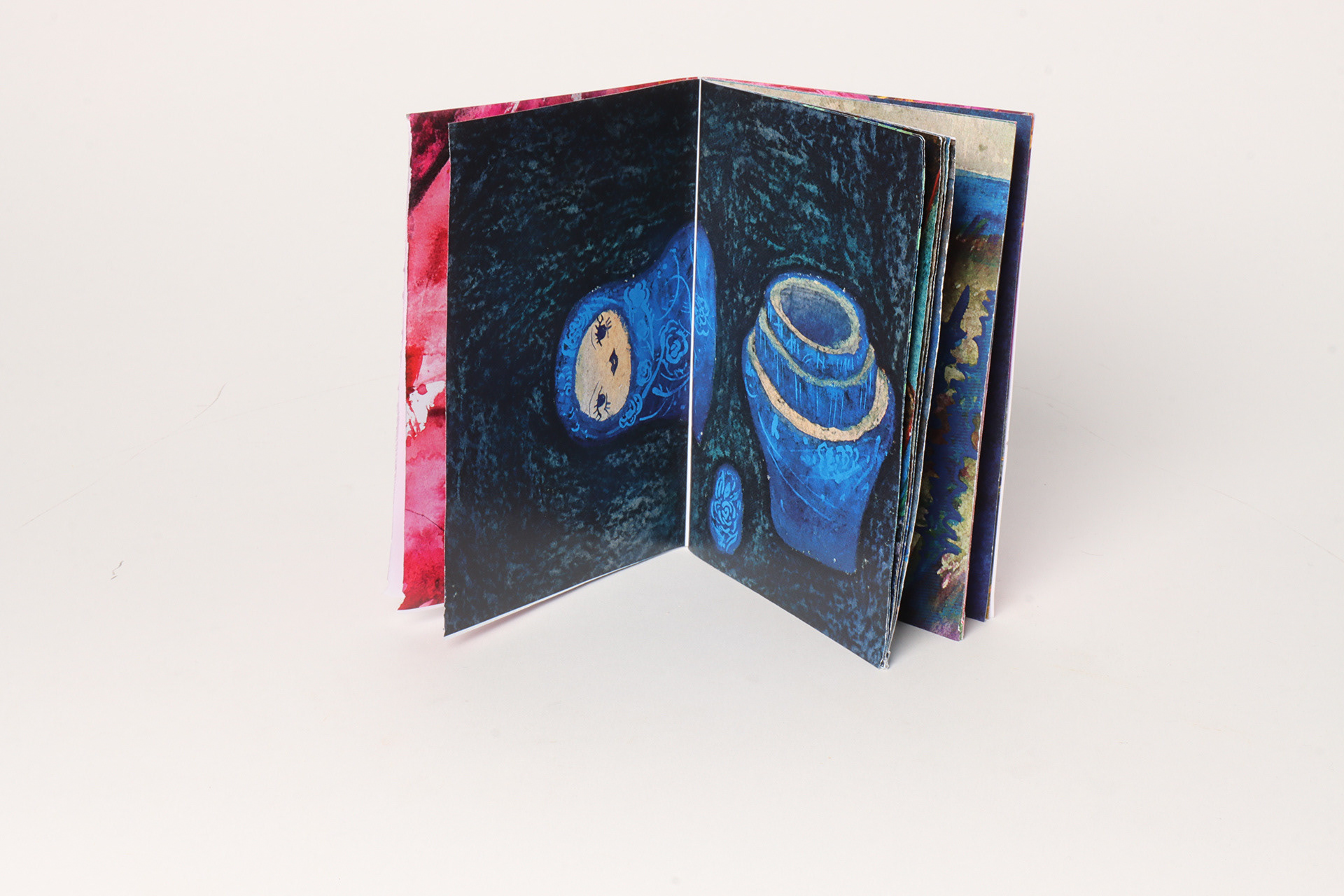



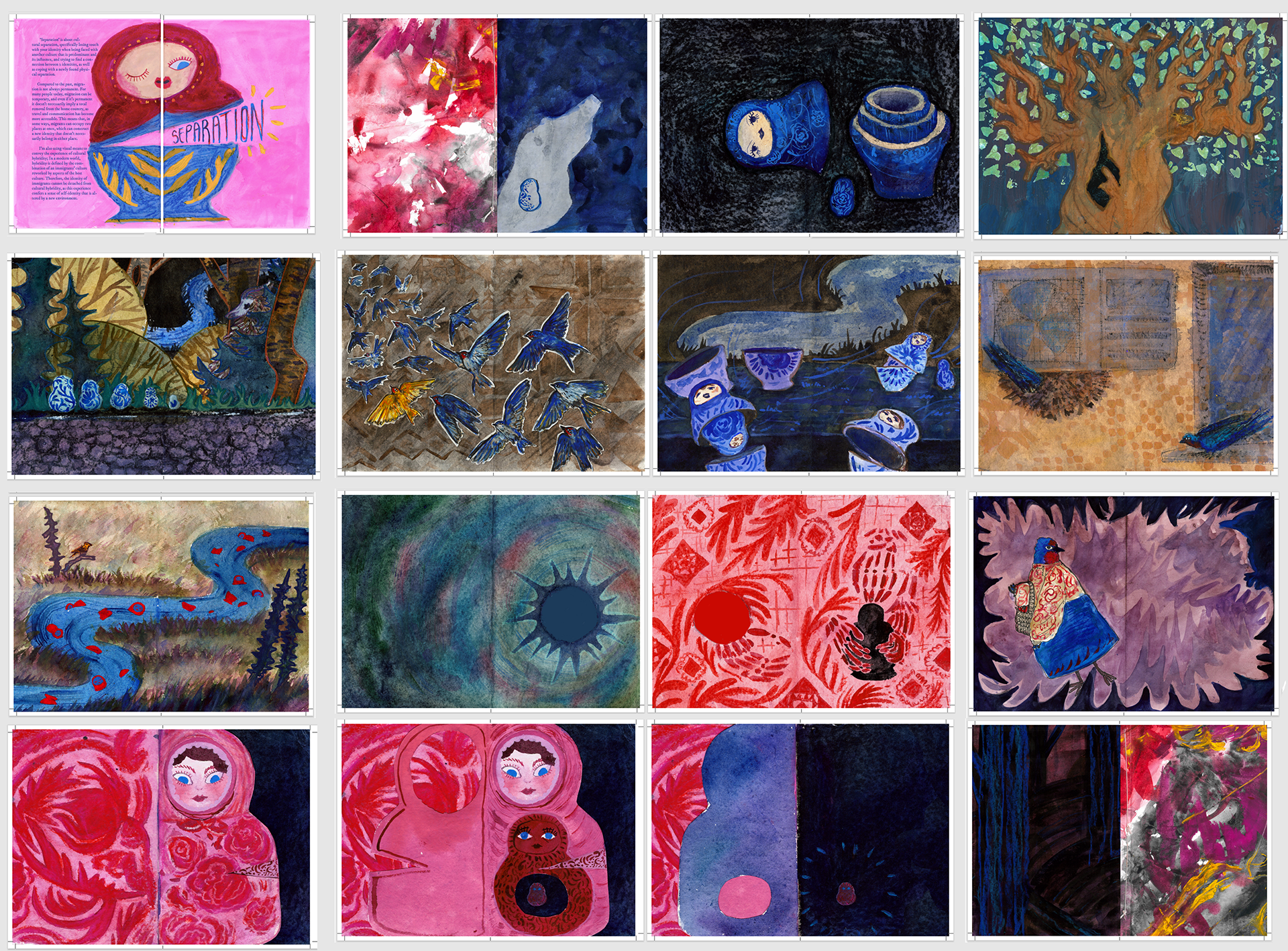
FINAL BOOK

































I struggled with the 'Amplify brief' at every stage from the beginning to the end. I had issues ranging from simply choosing the themes of the book to printing it out.
I had a lot of problems when putting the book into the template and converting it. This was all due to my lack of knowledge at the time about printing, and learning how to do it was not very difficult.
Some of the deeper issues that I had were related to not knowing what I want to say through this book or what its purpose is, which also made me really uncertain about what the imagery in the book should be.
I think that some much went wrong because I did not take enough time to think of the topic in the beginning of the project, which made me feel extremely unsure of everything throughout the whole brief. Although I was slow to think of what I want to represent in this book, there was really no need for me to second-guess everything that I did in it.
Moreover, this was one of the first times on this course where I had to multi task multiple projects. Multi-tasking is not usually an issue for me, but, since I preferred the other projects much more, I would only focus on them and ignore Amplify whenever I didn't know what to do for it (which was really often). Constantly postponing thinking about it made Amplify seem more difficult and scary than it should have been, which made me postpone starting the final booklet for way too long.
Something else that I struggled with was the making of the pages. I wanted them to have a traditional feel but I think they ended up looking too messy and not polished enough. This was also something that I was told to improve on in first year, specifically limiting the amount of visual information in my work and focus more on polishing my work. Thinking about how often times 'less is more' is definitely something that I should be working on in the future.
Although this project made me struggle, it also was a good way for me to grasp everything that I should be improving on this year, such as getting better at planning and evaluating my research findings when creating an outcome, and also getting better at visual communication in general.
